3
Pragmatism and the Repentant Sense of Life
The most tragic moral conflict, Sidney Hook wrote in 1960 in his essay "Pragmatism and the Tragic Sense of Life," arises when two rights (decisions dictated by conscience, contract, or law) conflict with each other—for no matter how the conflict is resolved, some good will be sacrificed. Hook's formulation was a restatement of Reinhold Niebuhr's argument, presented earlier in The Irony of American History , that had influenced the New York intellectuals so deeply. Niebuhr had argued that in the postwar world nations faced the tragic (because unwanted, unavoidable, and complex) responsibility of making "conscious choices of evil for the sake of good," bearing guilt in the name of some higher responsibility or sacrificing some high value for another even higher.[1] The affirmers and dissenters faced similar tragic moral conflicts of conscience throughout their careers, but those choices seemed particularly difficult in the decade following World War II.
Many values and orientations the group had considered useful before the war now had to be questioned in the postcommunist and postideological world they began to envision. Above all, ideology, once hailed by an ideological New York group whose intellectual function had been to interpret and sustain it, was now to be challenged and denounced as a form of absolutism. Further, during the late 1940s and early 1950s many ex-Communist and former fellow travelers in the American intellectual community wrote books confessing their past mistakes, repenting their political sins, and asking atonement. Here, too, the New York group might have to sacrifice high values for those higher: Were the works of repentance cleansing to the intellectual community or stifling to intellectual independence and further dissent?
"After the signing of the Nazi Soviet pact," Granville Hicks wrote in
the Antioch Review in 1945, "a number of specialists on Russia came forward to tell us all the things that they had not found it expedient to tell us in earlier years, and one wonders if there will be a second outburst of true confession on some future occasion."[2] Hicks would have been surprised to know how prophetic he was at the moment he wrote—standing, as he was, at the threshold of the very period he foresaw.
From the end of World War II until the mid-1950s, a confessional literature of ex-Communist repentance and disillusionment spread across portions of the intellectual community. (In the next generation, the New Left radicals would also have their day of repentance.)[3] Before the war only two confessional books surfaced—J. B. Matthews's Odyssey of a Fellow Traveler (1938) and Benjamin Gitlow's I Confess (1940)—both of which were dismissed by the New York group as intellectually insignificant. Matthews was thought to be a huckster,the Billy Sunday of the ex-Communists, and Gitlow, a former party functionary, was considered uninteresting. After the war Louis Budenz's This Is My Story (1947) and Elizabeth Bentley's Out of Bondage (1951) were also ignored by the New York group because of the authors' unintellectual or sensationalist approaches.[4]
The content and reception of three quite other books, however, take us to the heart of the controversy. The first of these, Lionel Trilling's insightful The Middle of the Journey (1947), was ignored on publication because the time was not yet right for a novelistic consideration of the tensions created within the intellectual community by the disillusionment with Communism and the apostasy it produced. Trilling's novel was a study of several political types, one of which was based on Whittaker Chambers. "So far as The Middle of the Journey had a polemical end in view," Trilling wrote later, "it was that of bringing to light the clandestine negation of the political life which Stalinist Communism had fostered among the intellectuals of the West."[5] The writing was consciously in the style of Henry James, with some of the virtues of James's dialogue and manner, but it featured a political sensibility that James lacked.
Two years later the second momentous book, a celebrated collection of autobiographical essays from European and American ex-Communists, was published as The God That Failed (1949). Although its impact was felt in the intellectual community at large, it did not have a reorienting influence on the New York group, since it reproduced arguments they had been voicing for more than a decade.
With the publication of the third book, Whittaker Chambers's Witness (1952), the left-wing landscape in America was changed unmistakably. Despite its weaknesses, Witness looms as the book of an era: an autobi-
ography of enormous power, a nonfiction novel of unequaled psychological and philosophic choice, a story of political espionage and intrigue taut with tension, a compelling courtroom case,a tragedy of personal and family horror, of suicide and madness. Above all Witness riveted the reader to the dramatic question of what humanity's vision of the future should be, and what role individuals and collectivities must play to realize that vision.
As Chambers explained it, two competing faiths were forever battling for dominance in the world. One faith was the belief in Man, a logic that led unfalteringly to Communism; the other was the faith in God, which manifested itself in Christianity. No neutrality was possible in this mortal combat, and before the end of the century one of the opponents would wholly prevail. Chambers was pessimistic about the chances of Christianity to triumph, yet a person of courage needed to speak out anyway. After he had issued his warning to the world, even his most heated critics acknowledged his talent as a writer and the book's many solid accomplishment.
In responding to Chambers and other apologists, the New York group had to face some difficult questions about their own identities. Most ex-Communists did not disturb them, especially if the converts embraced liberal values. It was the missionary ex-Communists who kept a sense of divine purpose who unsettled them. Touched off by the tensions of the McCarthy period and the Cold War, their response to the literature of repentance partook of the same hostility to ideological inflexibility that prompted them to oppose the Waldorf Conference with such enthusiasm. Yet their contentiousness was tempered by their recently acquired sophistication in sociology and literary criticism, and their new appreciation for complexity, irony, tragedy, and ambiguity.
Absolutism, Ideology, and Pragmatism
The strong impulses of faith, absolutism, and ideology in Chambers's message alarmed the New York group. It would be difficult to imagine a more theological title than Witness , and his book became a symbol for them of the dangers involved in a religious orientation afoot in the public sphere. Hook, who throughout the 1940s criticized the Catholic church and other forms of corporate faith, reviewed Witness for the Sunday New York Times and called it "a minor classic in the history of religious conversions." Howe wondered whether "an unsympathetic reader might, in fact, conclude that God spent the past several years as a special aid [sic ] to the House Committee on Un-American Activities."[6]
To both Howe and Rahv, Chambers seemed Dostoevskian in his pursuit of faith and certainty. According to Howe, Chambers aspired to be "a twentieth-century Dostoevsky" who would fight "the Moscow antiChrist." Rahv, who had studied and written about the Russian author, found Chambers "Dostoevskyean in essence" from the first time they had met in the early 1930s when both were still Communists.[7]
Communists and missionary ex-Communists appeared to the New York group as seekers of mystical truths in an irrational realm. Chambers, in Rahv's words, was "essentially a mystic" who was unconcerned with empirical politics. Richard Crossman, fresh from editing The God That Failed , drove Chambers's image even further, portraying him as caught not merely in a mystical, irrational world, but in a "nightmare" state. "If these were scenes from a novel, I should say that another Edgar Allan Poe had risen across the Atlantic." Crossman went on to compare Witness to Hitler's Mein Kampf , demonstrating that even Chambers's critics could lose a sense of proportion.[8]
Alfred Kazin, in contrast, was more sympathetic in his approach to the ex-leftist true-believers. "No man ever lightly reverses the faith of an adult lifetime, held implacably to the point of criminality," Kazin copied into his journal from his volume of Witness . "He reverses it only with a violence greater than the force of the faith he is repudiating." Chambers's religious outlook did not repel Kazin, who wrote a short time later that "Last week, reading the Chambers book, I was still grateful to anyone for proclaiming belief in Him."[9]
But for the New York group as a whole, the need for an allencompassing faith was a misguided quest for psychological and intellectual certainty. Robert Gorham Davis, a literary critic who occasionally wrote for Partisan Review and Commentary , made that point in his testimony before the House Un-American Activities Committee (HUAC) hearings in Washington in February 1953. Asked by Congressman Donald Jackson why an intellectual would submit to Party discipline, Davis replied: "Because those who join desire certainty. . . . The communists always have an answer to everything. . . . This is part, unquestionably for many people—the part of the psychological satisfaction of being a communist."[10]
If these traits accounted for the psychological attractions of Communism—the reassurances of faith, the irrational and mystical, the certainty—they were also the characteristics found in many ex-Communists. That kinship between Communists and ex-Communists, indeed, was one of the central themes of The God That Failed . Ignazio Silone, in his essay in the book, confided that he avoided joining any ex-Communist
groups, since they had "all the defects of official Communism," especially the sort of fanaticism and centralization conducive to fascism. "It is not easy to free oneself from an experience as intense as that of the underground organization of the Communist Part," he warned. "Something of it remains and leaves a mark on the character which lasts all one's life. One can, in fact, notice how recognizable the ex-Communists are. They constitute a category apart, like ex-priests and ex-regular officers." In their contributions to the book, Arthur Koestler and Louis Fischer each observed the same phenomenon in converts to ex-Communism.[11]
Those driven by faith, the New York group assumed, found themselves embracing total solutions. Faith led to monolithic rather than partial beliefs and plans, the sort of absolutist approach that could endanger freedom in postwar America. Over the course of the 1940s, the ideal of the New York group was increasingly articulated in terms of values such as pluralism, moderation, tolerance, pragmatism, diversity, democracy, and freedom. Increasingly the New York intellectuals began to celebrate the tentative, provisional, and experimental. A postcommunist vision (now that intellectuals were less likely to be communists or ideologues) had to rid itself of the vision of totality that underlay totalitarianism. As the Cold War began to appear more threatening, so did the absolutist characteristics of some ex-Communist intellectuals.
In this regard, Witness evoked the New York group's worst fears. Because they equated pragmatism and Americanism, several of them wondered whether Chambers's inflexibility represented part of true American culture at all. Rahv found Chambers pursuing the absolute first in history and then in God, and thought this quest was "an idea so utterly unpragmatic that one is almost tempted to call it 'un-American.'" Howe shared Rahv's amazement, asking of Chambers's lust for totality: "how could Dostoevsky be an American, or an American be Dostoevsky?" Chambers's "vision of apocalypse," Howe told his readers, "is not highly regarded in this country." Hook joined the chorus. "The American experience itself," Hook declared confidently, "is after all the best answer to Chambers."[12]
Although Rahv, Howe, and Hook correctly identified the pragmatic impulse as important, they conveniently forgot the millennial, apocalyptic, and evangelical strains so predominant in American history. They thought the ex-Communist could not tend an absolutist garden in our native soil, although from the Puritan beginning to the present a portion of the population has always rallied to apocalyptic and millennial visions. Both Chambers's millennialism and the New York group's pragmatism were the products of American traditions. There was a precedent for each,
as America has had a culture that has encompassed commonsense, empirical figures on one side, utopian, apocalyptic, and evangelical figures on the other, and many combinations of the two in between.
Equally disturbing to Howe was Chambers's insistence that his outlook provided a plan of action. Prophecy, in Howe's opinion, did not equal plan. To be productive, a historian or social critic needed to make useful distinctions. Chambers, for example, desperately urged Western intellectuals to save the West before it was too late. But of what use was such a large, unwieldy, and imprecise concept? "What is this 'West' that is to be saved?" Howe inquired. "The Salk vaccine or Jim Crow, anesthesia or torture, Shakespeare or Spillane, the seven-hour day or child labor? Why must some undifferentiated entity be saved or not saved?" In the end Howe denied that Chambers had a social theory at all, only a "Manichaean demonology."[13]
For the New York group, Chambers's apologia was yet another chapter in the conflict that had begun in the late nineteenth century the battle in American intellectual history between the forces of philosophic absolutism and the forces of pragmatism, relativism, and scientific naturalism.[14] The most concerned of the New York intellectuals about the ex-Communists' lack of pragmatism, naturally was Hook. As early as 1920, Hook's mentor, John Dewey, had argued against traditional philosophers who spoke in absolutes. "They tell us about the state when we want to know about some state," Dewey complained. Social philosophers needed to supply hypotheses to be tested rather than talking about absolutes, which closed the inquiry. Later in the 1920s, in an essay for the New Republic on Soviet Communism, Dewey wrote that "Not being an absolutist of either type, I find it more instructive to regard it as an experiment whose outcome is quite undetermined."[15]
Hook's pragmatism, though, was so strict in its standards of which positions qualified as anti-absolutist that he often berated the dissenters along with those like Chambers. He found it ironic, for example, that Howe set himself as a critic of Chambers's absolutism, since "during this whole period Howe was a Trotskyist—as absolute a Leninist as the Stalinists." He later claimed that Howe and the Trotskyists were attacking social democrats like himself "for being half-hearted, timid, opportunistic, etc.," while at the same time they were attacking Chambers for lacking those traits.[16]
In response to Witness , Hook admonished Chambers that with regard to "social programs and political strategy" religion was insufficient. There was "no substitute for creative intelligence."[17] For Hook that meant flexible, scientific, and empirical intelligence—of the sort descended from
Dewey rather than Hegel. "But perhaps the greatest lesson to which this literature points," Hook instructed his readers, "is that good sense in the quest for the good life in the good society depends not so much on what ideals are held as on how they are held; not so much on the nature of our beliefs as on the methods by which they are reached."[18] This is perhaps the most representative statement of Hook's entire philosophical system.
Still, Hook downplayed the absolutism of most of the ex-Communists. In an article for the New York Times Magazine in summer 1954, he argued that "there is no such thing as the politics of the ex-Communist," among whose ranks were found a diverse collection of political outlooks and party identifications. The confusion arose because we have generalized "from a few conspicuous illustrations." Hook reassured America that "The Communist generalization that most former Communists embrace the fanaticism of some other totalitarian creed or party is false. Most of them return to an earlier form of liberalism." Americans could now breathe a sigh of relief, since "having fled from what they regard, rightly or wrongly, as a political church, most ex-Communists are not likely to embrace another church, or to accept any source of spiritual authority except their new and hard-won faith in free intelligence and autonomous morality."[19] Ex-Communist absolutists were dangerous, he agreed, but he felt it important to acknowledge that most ex-Communists had not become fanatics.
Because the New York intellectuals perceived doctrinaire or passionate systems as the most salient form of absolutism endangering the interwoven fabric of international and domestic culture, the group's antiabsolutism manifested itself prominently as an anti-ideological pre-occupation.[20] In the 1950s and 1960s observers came to call this the end-of-ideology impulse, partly because of a series of papers with that theme delivered at the Future of Freedom conference in Milan in September 1955, sponsored by the Congress for Cultural Freedom.
The anti-ideology outlook remained a strong component in the group's thought even after the 1970s, when Irving Kristol began to argue for a reinvigoration of conservative ideology in the American business community.[21] Like others in the New York group, and like the economist Joseph Schumpeter, who also wrote about the interplay between economic and political systems, Kristol realized that it was important for intellectuals to construct an appropriately moderate and flexible ideology to guide and legitimize their own culture, while at the same time it was necessary for them to oppose ideological systems that were excessively passionate, moralistic, demagogic, or absolutist.
By the term ideology, the New York critics meant abstract and fanatical
thinking of the sort that constructed a complete and rigidly connected world view. Ideology was utopian rather than practical, passionately committed to an ideal rather than rationally analytical, and promoted an absolute vision that embodied total solutions rather than tentative hypotheses. Theirs was not the Marxist definition of ideology as false consciousness, the illusions that a class harbors about itself.
Because large political visions and passionate social movements were assumed to have led in Europe to fascism on the right and totalitarianism on the left, it was thought dangerous to deal any longer in these volatile commodities. It was safer to approach the present with the pragmatic instruments of realistic and moderate public policy changes. Keynesian countercyclical policy was less likely than a more total and inflexible ideological vision to produce absolutism. Common sense was an intellectual virtue.
Rather than creating a grand vision of the good society, which would have to be achieved through several visionary leaps and pirouettes without touching the ground, it was assumed safer to consider the good society more modestly—as nearly achieved already. This is human society, the anti-ideologists felt, and what can we really expect of it? The good society, they thought, needed only a few periodic adjustments by technicians to keep it on course. This outlook complemented the new consensus school of history, some of whose members—such as Daniel Boorstin in The Genius of American Politics (1953)—celebrated the pragmatic forging of common values and assumed no significant conflicts between sectors of society throughout the course of American history.
The importance the Partisan group attributed to the anti-ideological vision was revealed by their choice of European friends. The most prominent of their European colleagues were Arthur Koestler, George Orwell, and Stephen Spender in Britain; Raymond Aron and Andre[André] Malraux in France; and Ignazio Silone and Nicola Chiaromonte in Italy. Several of these associates contributed essays to The God That Failed . Like the New York group, the European circle was split between affirmers and dissenters—with Raymond Aron among prominent affirmers, and Stephen Spender and Ignazio Silone the leading dissenters—but differences were subsumed under a common outlook, a shared commitment to purifying socialist thought of any totalitarian elements and the desire to create a benign socialist or liberal welfare state with an essential democratic component. The bond between these Europeans and the New York group lay in their opposition to destructive utopianism, inflexibility, and visionary ideology.
Further, there was a mutual respect on both sides of the Atlantic. The
Americans admired their European friends for having been on the front lines of the totalitarian oppression in the 1930s and 1940s. The Europeans knew firsthand of the horrors the New York group could only darkly imagine. The Europeans, in turn, admired their American colleagues for having been among the first to analyze and publicize the fatal flaws in the Stalinist world. Who had been earlier than Hook, on either side of the Atlantic, first as a knowledgeable ally of the Soviet Union and then as a thorough and rational critic of its dangers? It was Partisan Review that first helped to discredit Stalinism and totalitarianism, and led an assault on utopian social visions that called for sacrificing present generations for promises of abundance and equality beyond the horizon. When the Europeans came later to repudiate Stalinism and ideology, many found themselves repeating the New York group's earlier formulations—one of the first times that European intellectuals looked to their American colleagues for leadership.
During the 1940s and 1950s, then, anti-Stalinism and anti-ideology became a shared cause across the Atlantic, with each side contributing significant ideas to the common fund. In this cross-pollination of the intellectual communities, the Europeans wrote for Partisan Review , Commentary , and Dissent , and the Americans contributed to Encounter , and even sent Irving Kristol and Dwight Macdonald to London to help edit it. Within this transatlantic community, tensions between affirmers and dissenters persisted, but anti-Stalinism and anti-ideology cemented the factions together.
The most evocative statement of the New York group's position about the danger of absolute visions in the postwar world was Trilling's Middle of the Journey —a novel that examined the tensions between an ex-Communist, two fellow-traveling liberals who sympathized with the Communists, and a democratic liberal who chose moderation and pluralism. He had gone to Columbia in the 1920s with Whittaker Chambers, and had known him through the years, although not well. But Chambers had a riveting effect on those he met, whether one liked him or not, and Trilling decided to pattern Gifford Maxim, one of the major characters in his novel, on Chambers. Although Trilling said that Chambers "had never been a friend of mine," he admitted that "there was also something that engaged my interest and even respect." In court Trilling had said publicly, "Whittaker Chambers is a man of honor." He considered Chambers courageous. "In Whittaker Chambers there was much to be faulted," Trilling wrote near the end of his life, "but nothing I know of him has ever led me to doubt his magnanimous intention."[22] Chambers surfaced in Trilling's novel a year before he emerged into national prominence at the HUAC investigations.
Among Trilling's characters—Gifford Maxim, John Laskell, and Arthur and Nancy Croom—the fears troubling the New York group were played out. John Laskell, the character who represents Trilling's outlook, is a former fellow traveler who throughout the course of the story falls away from the camp of Soviet sympathizers but who is moderate and pragmatic enough not to join the ex-Communist extremists. Even when he was a sympathizer, Laskell always had a realistic bent, as illustrated by his interest in writing technical social-scientific monographs on housing policy. Unlike the fellow-traveling Arthur and Nancy Croom, Laskell has his feet on the ground, a trait to be admired in the postwar world of confusion. (Some thought that the Crooms were patterned after Alger and Priscilla Hiss, but, as Trilling later pointed out, who had even heard of the Hisses when he was writing the book in 1946?)
Soon after the book opens, Laskell convinces himself "that life was really a matter of routine, of clean face and neck and ears and shirts, not of such betrayals of the mind as led to being in love with death, or such things as the madness and treachery of Gifford Maxim."[23] Maxim, caught in the revelations of spirit and history that projected his vision into ethe-real realms, was always dirty and unkempt—having sacrificed appearances in this world for an investment in the future.
The woman with whom Laskell relates most intimately in the story, Emily Caldwell, is also a practical anti-ideological person—although not on intellectual grounds. Asked by Nancy Croom, the most committed Communist sympathizer in the novel, whether people should not aspire to think of and be concerned about "mankind in general," Emily is indifferent and responds to Nancy that the best motto is "Carpe diem," or "Snatch the day and put very little trust in tomorrow." Emily's practical image is sharpened further. In keeping with the anti-ideologist's preference for making small adjustments in society with the help of public policy and social scientific tools, Emily and her husband Duck (a carpenter and handyman) live in a reconstructed tool shed. "I'm so proud of the house," Emily tells Laskell, "I must show it to you. This was an old tool house, you know."[24]
Arthur and Nancy Croom are not portrayed kindly. Nancy, an even more dogmatic fellow traveler than her husband, refuses to see what is occurring in the world. She has an "aura of self-deception," and "sets her chin sternly against any knowledge of the world in which she will have to make her sentiment prevail." The Crooms, for example, employ Emily's husband Duck as a handyman. Duck is a drunkard, rebellious about their authority and slow and unreliable. Yet the Crooms adore him and speak reverently of him. Laskell cannot imagine why the Crooms, whose philosophy urges hurrying the present into the future, can be so taken by a
person who maintains a slow pace and will not be hurried. It finally becomes apparent to Laskell that, to the Crooms, Duck is like Communism: something that they purposely refuse to understand.[25] The Crooms insist on taking Duck for something he is not: noble, a reliable workman, a trusted friend. The Crooms will not admit Duck's real nature, as they will not admit the real nature of Communism, and so they do not see the contradiction between either of them and their ideals.
Through Laskell, Trilling deals with the relationship of the present to the future, rejecting, as other anti-ideologists did, large "ideological" visions of the future that sacrificed democracy, individualism, civil liberties, and pluralism in the present for some greater recompense later. Trilling's advice, through John Laskell, is to forget about the future and live carefully in the present. It becomes clear to Laskell "that the present could no longer contrive and manufacture the future by throwing forward, in the form of expectation and hope, the desires of the present moment." Only children "live the life of promises," and those who insist on looking to the future will miss their chance for maturity and remain children.[26] Responsibility is immediate; it exists in the present.
Gifford Maxim, the ideologist who first wears the uniform of the Communist and then the holy robes of the ex-Communist Christian, thinks Laskell is naive. He uses Melville's story of Billy Budd to illustrate to Laskell how important it is that the spirit cleave to certain necessities in life. Billy Budd , Maxim assures Laskell, "is a political parable, but on a higher level than we are used to taking our political parables. It is the tragedy of Spirit in the world of necessity." Captain Vere becomes Maxim's vision of the ex-Communist believer, and Nancy Croom agrees with Maxim, though Laskell does not. "If you think about it," muses Nancy, "you see that it is really quite applicable to the Moscow trials. Even if those men were subjectively innocent—I mean even if they had good motives for what they did, like Budd—I don't believe that's so, but even if it were so—they may have had to be executed for the sake of what he calls Law in the world of Necessity."[27] Like Captain Vere, the believers on each side—Communists and ex-Communists—have to uphold absolute principles to maintain their ordered vision of the future. The anti-ideologists, the pragmatists, the dissenters, those who will not believe: they must hang from the yardarm in this world of necessities. Is it any wonder, believing as they did that they had been sentenced to the yard-arm, that the New York intellectuals reacted with such intensity to the two camps of believers?
Between the pair of absolutisms, the Communist-sympathizing absolutism of the Crooms and Maxim's newfound ex-Communist religious
faith, Laskell chooses a middle path of practical moderation. Trilling and Laskell will not be bound to ideological visions. Near the end of the story Maxim recognizes Laskell's choice and has a "sneer" for it. "Neither beast nor angel!" he accuses him. "Like any bourgeois intellectual, you want to make the best of every possible world and every possible view. Anything to avoid a commitment, anything not to have to take a risk." Laskell accepts Maxim's anger, understanding it as "the anger of the masked will at the appearance of an idea in modulation." But Maxim's anger cools when he realizes that ultimately he himself will triumph. "Yes, you were right," he apologizes to Laskell. "The Crooms and myself are at hopeless extremes. The child and the metaphysical essence—you put it very well. . . . And you spoke for something between. Call it the human being in maturity, at once responsible and conditioned."[28]
Although he considered Laskell right, Maxim still thought him a poor prophet. It was Maxim rather than Laskell who stood on the side of history, as only Communists and ex-Communists knew how. Maxim is convinced that he understands history, including the present, and the present is a time of extremism where only extremism will prove useful and victorious. Laskell's liberal tolerance is outdated, passe[passé]. "You could have kept that kind of mind up to fifty years ago," Maxim instructs Laskell, "vestigially even up to ten years ago. But now it is dead and what you feel is only a ghost. You know it as well as I do—the day for being human in the way you feel now is over. Gone. Done for. Finished." He offers Laskell little optimism about the future of moderate liberal humanism. "Maybe it will come again. But not for a long time, John, not until the Crooms and I have won and established ourselves against the anarchy of the world."
The Crooms are repelled by the idea of joining forces in an absolutist mindset with a traitorous apostate from Communism like Maxim. But history will not allow them to be deterred. "I'm sorry" Maxim confides to them, "—but we really must go hand in hand. Let it be our open secret. You will preach the law for the masses. I will preach the law for the leaders." The Crooms flinch at the prospect, but Maxim ignores their uneasiness. "We will hate each other and we will make the new world. And when we've made it and it has done its work, then maybe we will resurrect John Laskell."[29] The world was back at Matthew Arnold's "Dover Beach" with the clash of armies in the sinister moonlight, and Laskell, Trilling, and the anti-ideologists gave themselves little chance of prevailing in the battle. It was a time of extremism.
As Trilling's novel suggests, the New York intellectuals were in a paradoxical and somewhat untenable position with respect to their criticism
of Communism in the late 1940s and 1950s. Could anti-absolutists who opposed Communism as an absolute evil do so without falling into another form of absolutism? Some of them came dangerously close. Diana Trilling, for example, complained that "totalitarianism is nothing if not a totality," but then went on to fashion her own inflexible dualism: "Either you have a free vote, or you do not. Either you have the freedom to criticize your government and change it, or you do not. Either you can write and speak and work as you choose, or you cannot—and all such criteria as 'free for whom,' 'free for what,' are only rationalizations."[30]
Granville Hicks was even clearer about the impossibility of taking a neutral stance toward Communism, although in the end he became confused and wanted to have it both ways. In an article in Commentary in 1951, Hicks warned his readers that Communism could not be treated as merely another idea to be tolerated or subjected to liberal freedoms. "It is one of the real absolutes of our time," he wrote of Communism as an ex-insider, "perhaps the only absolute, and by its nature, by virtue of what it has made of itself, it permits no neutrality. The liquidation of neutrals is one of its specialties." According to this view, the initiated such as Hicks understood the nature of Communism, while liberals such as Nation editor Freda Kirchwey, by their misjudgment, provided the nooses for those who would happily be their executioners.[31]
Yet Hicks tried to play both sides of the fence, denying he favored an absolute opposition. He realized the precariousness of his balancing act. "To call Communism an absolute is, I realize, to invite an absolute anti-Communism," he admitted, "and the absolutists do exist and grow more numerous. That, however, is one of the chances that have to be taken in these constricted times." In a period of excess in which the very existence of liberalism might be destroyed, liberal principles could not be extended to those whose goal was to destroy liberalism without debate or referendum. "At least the assumptions of the absolute anti-Communists are in the open and can be openly examined and openly fought," Hicks wrote in defense of his position, "whereas the assumptions of the pro-Soviet liberals are concealed—often, one suspects, from such liberals themselves."[32] Here he might have referred directly to Nancy Croom.
The task for the New York group was to construct an opposition that was absolute enough to be effective in combating absolutism, without falling into the enemy's absolutist approach, an error that would allow the adversary to win the battle without having to fight. Hicks was the only figure to wrestle consciously with the paradox, but all he could do was to waltz rhetorically through an intellectual minefield. In consecutive sentences he admitted that no neutrality was possible against Commu-
nism, but then warned that "opposition is not, in my vocabulary, synonymous with 'fanatical hatred'—a fact that has won me some hard words from certain professional ex-Communists." In another pair of consecutive sentences he reported that "I believe that the struggle against Communist espionage must be unremitting," and yet "I don't believe that this fight against Communism requires all our energies or that we can afford to give all our energies to it."[33]
The best interpretation one can put on Hicks's position is that he favored an absolute orientation against Communism but opposed an absolutist means of expressing that position. Such a theoretical distinction, however, was difficult to maintain in practice. Many of the New York intellectuals, and many liberal intellectuals who agreed with them on this point, were less practical, empirical, and pragmatic in their social philosophy x than they assumed during the 1940s and 1950s. Opposing absolutism did not by itself make them flexible.
In a different context, Howe mentioned the same point about the affirmers in the mid-1950s. "One of the curiosities of our intellectual life at the present moment," Howe observed, "is the thoroughness with which the dominant school of liberalism—the school for which Sidney Hook is the philosopher-politician, David Riesman the sociologist and Lionel Trilling the literary moralist—exempts itself from its own analysis and recommendations. Few things are more dogmatic today than the anti-dogmatism of the liberal intellectual, few things more closed than his famous open mind."[34]
On these grounds Richard Crossman drew the connection between Chambers and the country Chambers hoped to save. "Whittaker Chambers personifies the American epoch in which he lives," Crossman reported, "the divided loyalties, the swiftly alternating moods of exaltation and despair, the conflicting urges, now to put the world to right and now to retire into lonely isolation; now to appease and now to smash the enemy." An Englishman, Crossman saw America wobbling under extremist impulses—impulses evident in Chambers's book. "All these features of his autobiography are a microcosm of American political life—or rather, to change the image, a distorting mirror, in which one aspect of America is reflected, monstrously distorted, yet still recognizable, an American [sic ] which prophetically demands the destruction of anyone and everyone who questions the validity of the American way of life."[35]
Crossman's portrait of America was insightful: a culture caught in a whirl of changing positions that, if not as absolutist as Communist ideology, were often coopted by inflexibility. In this stormy period, the New York intellectuals were trying to sail a course toward an intelligent and
calmer vision of society, and trying to convince society to follow their lead. Battered by fierce conflicting pressures, members of the group, not surprisingly occasionally became immoderate themselves.
This stormy period also threw together unlikely collaborators. For example, Chambers, who was very involved in the public confessional process, was associated—if more in fiction than in reality—with Trilling, a rather politically uninvolved literary critic. Although Trilling's Middle of the Journey contained anti-ideological themes and criticism of liberal fellow-travelers during the Cold War, he was not actively involved in most of the group's heated polemics. In that regard he was unlike Sidney Hook. If Hook was the New York intellectuals' early political voice, Trilling was their literary guide. Yet an examination of Trilling's background and career makes it evident why he devoted his only novel to the conflict against ideological extremism.
Lionel Trilling
Trilling's Middle of the Journey and his scattering of short stories went mostly unnoticed. Rather, his reputation rested on the strength of his literary criticism. The defining feature of his work was that he viewed his subject from a distance and perspective much like that of an intellectual historian. Instead of functioning as a judge of a work, as a participant in the process of literary criticism, he ascended to serve as an arbiter of the rules of that process and the culture under which it operated.
He once noted that after a certain point in literary history a poet's work was no longer judged by whether it measured the reality of his audience; instead, after that, the poet's work was assumed to measure the poet's inner authenticity. The relationship was then inverted: the poet was no longer required to fulfill the audience's standards, but rather the reverse.[36] As a critic, Trilling similarly reversed the relationship between himself and his culture—so that he sat in judgment of the system of culture rather than merely following its dictates. The critic had to employ a system of meanings and values rather than let the system employ him.
Trilling wanted to know how culture related to life, and how criticism related to culture. In that pursuit, he felt that good "criticism, like science, occupies itself with questions of causation." Unlike literary formalism, Trilling's causal criticism "committed itself to the belief that the comprehension of a literary work can be advanced by knowledge of the conditions under which it came into being, which may be supposed to explain why it is what it is." To explain a text, therefore, the contextual critic sought a biographical causation (of the author), an environmental
causation (the historical, economic, social and political context of the work), and a psychological causation (of the work, characters, and author).[37]
More than others in the New York group, Trilling was engaged with England and with British literature. His two book-length literary studies treat British writers Matthew Arnold and E. M. Forster. Of the essays in his major books (The Liberal Imagination, The Opposing Self, A Gathering of Fugitives, Beyond Culture , and The Last Decade ), roughly one third are on British authors and one third on American subjects. In the latter group are essays on authors such as Henry James, Henry Adams, Hawthorne, and Edith Wharton—the Americans Philip Rahv referred to as "palefaces" rather than "redskins."[38]
Three years younger than Hook, Trilling was born July 4, 1905, in New York City. He was an undergraduate at Columbia in the early twenties and received his bachelor's degree there in 1925 and his master's in 1926. Throughout his student years, Trilling was aware of how his Jewishness set him apart. "Being a Jew," he wrote in his journal in 1928, "is like walking in the wind or swimming: you are touched at all points and conscious everywhere." In the mid-1920s Trilling fell in with several fellow Columbia students who became the core of young contributors to the Menorah Journal , published by the International Menorah Society. (The Menorah Society had been founded by Henry Hurwitz at Harvard to combat Jewish isolation there.) Trilling became attached to the magazine after he had a story accepted by it during his senior year, and at the end of the 1920s he served as assistant editor for a year.[39]
The greatest intellectual influence on the young Trilling was Elliot Cohen, managing editor of the Menorah Journal . Scarcely older than those who wrote for him, Cohen, whom Trilling described as a tormented "genius," instilled in his writers the same interdisciplinary attitude that Dewey, Morris Cohen, and Marx had encouraged in Sidney Hook. As Trilling later remembered, "Elliot's own mind was dominated by his sense of the subtle interrelations that exist between the seemingly disparate parts of a culture. . . . Indeed, he taught the younger men around him that nothing in human life need be alien to their thought." Norman Podhoretz, Trilling's student and friend in the 1950s, believed that Cohen was Trilling's political guide, first leading him into Stalinism, then into anti-Stalinism, and finally into a greater appreciation of America.[40]
Trilling was the first Jew to break into an English department in a major American university. Other Jews bore scars from their attempts. When Ludwig Lewisohn completed graduate school at Columbia and sought a job, he was faced with hostility from English departments. His
Columbia advisor merely shrugged his shoulders and noted "how terribly hard it is for a man of Jewish birth to get a good position." Elliot Cohen had been one of Yale's most promising English students, but, finding an English professorship closed to him, he had gone into magazine editing. Trilling knew the risks. "When I decided to go into academic life," he remembered, "my friends thought me naive to the point of absurdity, nor were they wholly wrong. . . ."[41]
After receiving his master's degree, Trilling was appointed as an instructor during 1926–27 at the University of Wisconsin at Madison, and then as an instructor at Hunter College in New York from 1927 to 1930. In the interim he met and married the writer and critic Diana Rubin. In a move that he felt was "pretty openly regarded as an experiment" by the university, he was hired as an instructor at Columbia in 1931. The young scholar began to write an intellectual biography of Matthew Arnold, but made little progress on it. In 1936 the department informed him he was being dropped because "as a Freudian, a Marxist, and a Jew" he would be "more comfortable" somewhere else.
The normally passive Trilling decided to stand up for himself and persuaded his department to keep him for another year. The one year turned into three, and Trilling found a new confidence within himself. By 1938 he had finished his dissertation and received his doctorate, and the next year he published, at his own expense, his biography of Arnold. Advised by a friend that Columbia president Nicholas Murray Butler appreciated receiving faculty books, Trilling sent him one. Butler was an admirer of nineteenth-century genteel culture and therefore interested in Matthew Arnold. He was impressed enough with the book that he held a faculty dinner in Trilling's honor and used his "summer powers" to appoint him assistant professor. Butler also let the English department know that he wanted them to make the appointment permanent. During the dinner party the university president told a story that concluded with the line: "At Columbia, sir, we recognize merit, not race."[42]
Trilling never expressed any sharp hostility about the anti-Semitism he experienced. Rather, as he explained it, anti-Semitism provided him a means of establishing an outsider's position. "If the anti-Semitism that we observed did not arouse our indignation," he pointed out, "this was in part because we took it to be a kind of advantage: against this social antagonism we could define ourselves and our society." Yet, a few of Trilling's fellow critics thought he distanced himself from Jewish culture and religion, even though some of his stories, published as Of This Time, Of That Place , dealt with Jewish themes. "In this respect," William Barrett observed, "though in many other ways they were radically different per-
sonalities, Trilling's case seems to me perhaps comparable with that of Walter Lippmann, who eschewed religious attachment lest it exclude him from the American mainstream."[43]
Perhaps the pressure to get along at Columbia affected Trilling's different orientation to Jewish culture, but so had his family background. Unlike many others in the group, Trilling was not the product of the ferocious economic and intellectual conditions of the Jewish ghettos. As Diana Trilling was quick to remind others about her husband, "The message of Lionel's upbringing was of a different order. . . . as naturally as [his parents] breathed they thought of themselves, and always had, as middleclass people—were they not honest, respectable, committed to the solidity and progress of their adopted country?" She remembered a stable economic and social childhood for her husband. "Unlike others of his intellectual generation, that is, Lionel had no need to make for himself the strategic leap into the American middle class, with what this so often involves in defensiveness. . . . It was not his sense that life was a contest of minds or that intellect was a weapon; it was more an instrument of conscience."[44]
Some in the group felt Trilling was more cultured than the rest. Barrett thought him to be "a graceful man" whose grace had "something of a moral quality." In a backbiting group like the New York intellectuals, Barrett found it amazing that Trilling was almost never criticized—partly because he never got drunk, pushy, and abrasive at parties as the others did. Both Diana and Lionel acted as though "they had a life of their own to lead and were intent on living it."[45]
Whether consciously or not, Trilling had distanced himself from the lower elements of society and the lowness of political analysis. Alfred Kazin viewed Trilling "as a writer who had absorbed the casual, more gentlemanly style of the twenties much as Bellow and I had absorbed the social angers of the lower-class thirties." But it was not merely that Trilling was older, for so was Hook—one of the most intellectually combative of the group. Trilling's whole manner and interests had a detached and elevated style about them. After all, he was not drawn to writing about Marx or Trotsky, even in his early years, but rather engaged himself with Matthew Arnold and nineteenth-century Britain. "He seemed to feel more than the usual literary connections to things English," Kazin observed about Trilling's vision, "and proudly told me that his mother had been born in England. Victorian England was his intellectual motherland." In the beginning his style was a curiosity among the group, although a respected curiosity—as though he operated in a higher, more ethereal world than their own. "When I first encountered the gravity of
Lionel Trilling," Harold Rosenberg once remarked in his acerbic style, "I did not get the joke; it took me some time to realize that there wasn't any."[46]
Trilling and Kazin did not get along well, probably because of both personal differences and professional rivalry. Kazin felt as though Trilling could not abide his "temperament," and he noted in his journal that Trilling "cannot stand the ghetto Jew in me—he cannot stand my vitality." Kazin wrote of Trilling's "long repugnance to me, thoroughly based, I see now, on a fear of the 'extremism' or whatnot he finds in me."[47]
Kazin criticized Trilling for being a "would-be gentleman," and he disliked Trilling enough that it even made him angry with Diana Trilling's writing. (Kazin called her "Mrs. Cooking Spoon.") He complained in his journal of Trilling's "specious air of reasonableness which he gives to his prudencies and fears and prejudices," and felt that his "writing is so completely audience-minded, in this sense; it is the style of a lecturer, whose very turns and pauses and connecting phrases show that he is thinking of the audience." Kazin noted to himself that Trilling's "contrived and external reasonableness seems to me the mark of an imitative and timid and second-rate mind; a mind that does not have a particular vision to bring out from its own depths, but is trying to fit its convictions to the existing usages and standards and prejudices."[48]
Beyond the professional rivalry, the two had conflicting sets of values, some based on class differences. Trilling was urbane, reasonable, successful, and perhaps slightly pretentious, while Kazin was more actively involved in the thrust and grapple of ideas outside the purely literary realm—as well as continuing to identify with his lower-class origins. The animosity between Trilling and Kazin was one of the rare instances of class tensions within the New York group. Trilling's manners and aspirations provided a spark of tension for those others in the group who were sensitive to class differences and pretensions. Sidney Hook later claimed that Trilling's critics such as Barrett, Kazin, Delmore Schwartz, and Rahv were merely jealous of Trilling, and therefore accused him of gentility and trying to suppress his Jewishness. Hook thought those accusations unwarranted. "Only after Trilling died," Hook alleged, "did they all find a kinship in him."[49]
By 1936 whatever radicalism Trilling had once felt was already beginning to dissipate. Like Hook, Trilling found Marx fading into the intellectual background. Ironically this was the point at which the English Department at Columbia thought him too radical. Trilling, however, was already confiding to his journal that he was "no longer certain that the future will be a certain—Marxian—way. No longer measure all things by
linear Marxian yardstick."[50] Here already were glimpses of his character John Laskell, a decade or more before Laskell was conceived on paper Although he was well-respected for the intelligence of his literary criticism, after World War II Trilling's centrist conservative impulse did not fit in perfectly at Partisan Review .
In the mid-1940s Harold Rosenberg asked Rahv whether Trilling's pieces foreshadowed a new more conservative future for Partisan Review . Rosenberg did not stand alone in his assessment of Trilling. In Irving Howe's opinion, although Trilling "continued to think of himself as a liberal and felt hurt by the suggestions that he was not," his "critique of 'the liberal imagination' facilitated a turning away from all politics, whether liberal, radical, or conservative," and "provided a rationale for an increasingly relaxed and conservatized liberalism." Kazin agreed. Trilling "was the most successful leader of deradicalization—which was conducted in the name of the liberal 'imagination' against those who lacked it or had the wrong kind." Kazin summed up the indictment succinctly: "Arnold smote the philistines: Trilling the liberals."[51]
Trilling was surely stung by the accusations, but probably agreed with them in principle. He understood the path that Matthew Arnold had forged for him. "Arnold, I need hardly remind you, called himself a liberal," Trilling once acknowledged to a group of students, "yet his major effort in criticism was to bring into question the substance of liberal thought—the liberal assumptions, the liberal line of reasoning, the liberal conception of the quality life should have."[52]
There is another way to frame Trilling's role in the group. The New York intellectuals in the 1930s found two essential revolutions to be fought. The first was the revolution in the arena of intellectual politics, and it pitted the more democratic and Trotskyist elements of the socialist left (the New York intellectuals) against the Stalinists on their left and the defenders of capitalism on their right. This first revolution was led by Sidney Hook.
The second revolution, concurrent with the first, set the forces of literary and cultural modernism from Europe against the forces of mainstream American culture. In this battle the New York intellectuals championed modernism (Joyce, Kafka, Gide, Picasso, Stravinsky, and even some American modernists such as Pollock and de Kooning) against the proponents of American naturalism on their cultural right (Dreiser, Farrell, MacLeish, Wilder, and Frost) and the communist forces of proletarian realism on their cultural left (Michael Gold and others at The New Masses ). This second revolution had no formal leader, and was fought equally by Trilling, Rahv, Phillips, Macdonald, Howe, and others. Yet
Trilling, who was the most interested in culture and the least political of the New York group, might for that reason be the best representative of the cultural battle fought over modernism.
The irony is that Trilling was perhaps the first of the group to become disenchanted with modernism, in the late 1940s or early 1950s, because he felt it helped to produce an "adversary culture" of alienation and dissent that opposed cultural authority and, in this case, opposed America. As Barrett remembered, because Trilling "was ahead of his time" with this conservatism, those who later would be neoconservative leaders admired Trilling after the war "and virtually took him as a master."[53] At the time, most of the group unhesitatingly affirmed the value of alienation in producing independent social critics and avant-garde cultural critics. Indeed, alienation was such a byword among the Partisan crowd that Norman Podhoretz was asked by a New Yorker editor in the 1950s "whether there was a special typewriter at Partisan Review with the word 'alienation' on a single key."[54] But Trilling was never as convinced as the rest of them about the positive role of alienation.
Trilling also stood apart from other literary essayists in the group—Rahv, Phillips, and Howe—who often used the review of a novel as a polemical platform. Trilling, as Podhoretz later put it, did not have a "puritanical ferocity" about his work. (The group's polemical political style of criticism was evident, for example, in Rahv's review of Tender Is the Night , in which he advised Fitzgerald not to avoid discussing class conflict and the impending social revolution. "Dear Mr. Fitzgerald," Rahv warned him, "you can't hide from a hurricane under a beach umbrella.") Trilling rarely used such direct political and social references in his work because it was grounded in a different vision of the critic's responsibility: A critic subtly enlightened rather than actively engaged. "Trilling's eyes," Podhoretz noticed, "did not blaze with a fierce Calvinist light upon the written word; he did not erect the capacity for 'true judgment' into the very principle of being; he did not conceive of criticism as the rod of the Lord's wrath."[55]
Though Trilling was far less political than other members of the New York group, in comparison to critics outside the group his work was notably political and social in its themes. Like others in the group, Trilling was influenced by the historical and social criticism of Edmund Wilson. But, as Giles Gunn has pointed out, Trilling located the obstacles to fulfillment and expression within the individual, while Wilson located those barriers in the social or political environment.[56] The other New York critics followed Wilson more closely than Trilling in this respect.
To Wilson's interest in the social and historical context of a work of
literature and the biographical and ideological background of its author, Trilling brought the moral criticism of the British critic F. R. Leavis. Like Leavis, Trilling was at least as interested in the moral intention and impact of the work as in its historical context.
In Leavis, Trilling saw a critic who was not dogmatic in his approach, who required "no formulated first principles for his judgment but only the sensibility that is the whole response of his whole being." Trilling wanted to bring to criticism some of Leavis's "vital capacity for experience, a kind of reverent openness before life, and a marked moral intensity." Like Leavis, he strongly endorsed Matthew Arnold's belief that "Literature is the criticism of life." To be a moral critic of life was not to be "narrow and dour," but to interpret life and imagine the possibilities that could make life better. The moral approach made a declaration "about the qualities life does not have but should have." It would ask "for more energy and fineness of life, and, by its own communication of awareness, bring these qualities into being." Leavis's criticism had been devoted to the idea that "literature presents to us 'the possibilities of life,' the qualities of energy and fineness that life might have."[57]
That literature and criticism could illustrate the potentialities of life was compatible with the position of the affirmers in the New York group, and even the dissenters endorsed the role of affirmation in criticism. But Trilling went further and by the early 1960s was antagonistic to the "antisocial utterances of many modern writers" whose "expressions of antisocial feeling are nothing but imbecile."[58] Trilling was a leader among the New York group in his sympathy for intellectual affirmation—after all, he had been drawn to Matthew Arnold as early as the mid-1930s—and was a guide for others in that regard.
Leavis's "moral directness" and Trilling's intellectual affirmation did not preclude social concerns. "Sooner or later, of course, any critic of large mind will touch upon social matters," Trilling reported, "because what we call culture may be defined as the locus of the meeting of literature with social actions and attitudes." Politics was important. "What we address ourselves to is politics," he wrote of his vocation, "and politics of a quite ultimate kind, and to the disposition of the modern mind."[59]
This social and historical approach was evident in Trilling's influential The Liberal Imagination (1950), a collection of articles written in the 1940s that represented some of the clearest preoccupations of the group. In the first essay, Trilling criticized liberal writers such as Vernon Parrington and Theodore Dreiser for adhering to the simplistic and tired reform outlook of the liberal left. They were only a step away from the ideological blindness of the fellow travelers, and, especially in Parrington's case,
they judged both art and personal motive by the standards of political correctness. Trilling preferred Henry James and Nathaniel Hawthorne, who he thought were more complex, nuanced, and conservative than Dreiser and Parrington, and less given to simplistic political judgments. Hawthorne's "dissent from the orthodoxies of dissent" was the mark of an intellectual who properly insisted on independent analysis.[60]
The New York group's hostility to romanticism surfaced in Trilling's criticism of Sherwood Anderson and others as too romantic and insufficiently intellectual and rational. It was also apparent in Trilling's quest to capture Freud from the romantics and for the pragmatic critics. Against those intuitive and emotional writers, those authors "of the myth and the dark irrational ways of the mind" who claimed Freud as their own, Trilling announced that "the rationalistic element of Freud is foremost; before everything else he is positivistic."[61] Trilling also vented the group's hostility to scholarship (which was ivory tower and archival) instead of criticism (which was socially involved and intellectual). The New Critics—Allen Tate, John Crowe Ransom, and others—he reproached for abandoning the historical elements of literature to focus on its formalist (and scholarly) properties.[62]
The Liberal Imagination was Trilling's attempt to draw a responsible line for proper cultural intellectuals to follow—between the dangers of culture with too little social and political content (such as the New Critics), and culture with too much political or visionary content (the romantics with their visionary irrationalism, or Parrington and Dreiser with their leftist ideological orthodoxies and cliches of dissent). Instead Trilling wanted complexity in criticism and literature. In criticism that meant enough intellectual independence to free one's analysis from the orthodoxies of dissent. In fiction that meant refusing to mount a simplistic soapbox, and instead producing a "culture's hum and buzz of implication."[63]
Literary critics, Trilling advised, should "recall liberalism to its first essential imagination of variousness and possibility, which implies the awareness of complexity and difficulty." Literature and its criticism, he urged, is "the human activity that takes the fullest and most precise account of variousness, possibility, complexity, and difficulty."[64] This complexity and ambiguity were allied to an awareness of the tragic sense of life. That tragic outlook was intelligent, but also fundamentally conservative, for it acknowledged the extent to which society was unable to control itself. Tragedy understood that there were unintended consequences to the most well-intentioned actions. The tragic outlook suspected that we could not control the various aspects of our lives—through
reform or good intentions. The tragic view did not counsel despair, but neither did it campaign for reform. In that sense it had a clearly conservative component.
In effect, members of the group were moving from an idealistic and revolutionary vision of their earliest years that echoed Thomas Paine and the revolutionary generation of the 1770s, to a more practical and less optimistic view of society that echoed James Madison and the constitutional generation of the 1780s. As Madisonians, they no longer believed in the inherent goodness of the individual or the total salvation of society by a sweeping and apocalyptic change. They no longer subscribed to the most idealistic element of the socialist revolution. Instead they wanted to work within the contingencies of fallen mankind, to hope for the best but to guard against the worst. At first they combined this Madisonianism with their leftist commitments, but it soon led them into the camp of liberalism.
Trilling did not reject liberalism. He thought of himself as a liberal trying to improve liberalism, a centrist liberal who respected cultural tradition and the status quo. He wanted to be a liberal, but everywhere around him liberalism was a discouraging prospect. By the early 1950s, Trilling's early radicalism was a distant memory.
He shared this disillusionment about left reformist visions with Reinhold Niebuhr, Sidney Hook, and Richard Hofstadter, among others. Daniel Bell has said that at midcentury Trilling and Niebuhr were the key influences on the intellectual community, and Hook and Hofstadter only slightly less so. Trilling was so influential, according to Bell, "because of The Liberal Imagination , and the whole emphasis on complexity, irony, the simplicities of liberalism, and the pieties of liberalism."[65]
Trilling's emphasis coincided with Niebuhr's influential outlook. Niebuhr's The Irony of American History (1952) introduced the concepts of irony, tragedy, and complexity into historical analysis at the same time that Trilling announced the need for complexity and nuance in critical analysis, and that Hofstadter and other consensus historians repudiated the simplicity of the Progressive historians. "The thing which put together Niebuhr, Trilling, and Hofstadter," Bell remembered, "and which Sidney always in a way resented . . . is the emphasis of these people on the tragic sense of life." According to Bell, Hook's essay "Pragmatism and the Tragic Sense of Life" was a response to their concerns. Hook's article, Bell felt, "came really as a reaction to all the arguments that all of us had with Sidney and his feeling that somehow his role was sort of being leached away by the influence of Niebuhr."[66]
Hook's essay was an attempt to show that the pragmatic scientific nat-
uralism he shared with Dewey could recognize a tragic view of life, to prevent that theme being monopolized by Niebuhr's emphasis on a Calvinist evil inherent in individuals. Yet some critics were skeptical of the ability of the Dewey-Hook outlook to be tragic. Because Dewey's educational philosophy proposed that individuals were not "given" but "created," bad individuals were not the product of inherent evil or flaws but had been trained that way. Its optimistic implication was that educational and social contingencies, properly designed, could produce good people. In addition, because pragmatists depended centrally on the experimental method and the system of open debate, their critics assumed that there was an optimism that a reliance on the system would produce an increasingly better world. That belief was hard for many observers to accept in the wake of the 1930s and 1940s. Further, the philosopher Horace Kallen observed that a vital difference between William James and Dewey was that the latter failed to realize the actuality of mystical experience.[67] Without a belief in the mystical, how could a tragic view be constructed? The same might be asked of Hook.
But Dewey had his defenders in the conflict. The Harvard philosopher Morton White assailed both Niebuhr and Walter Lippmann for their criticisms of Dewey. White scoffed at the popular intellectual portrait of Dewey as an optimistic child of the Enlightenment and Niebuhr as a "shrewd Pauline" who was realistically aware of human limitations, a tough Christian realist who navigated between "idiotic optimism and equally idiotic pessimism." If Niebuhr objected to the scientific method to judge political issues, White inquired, "one can only ask: What other ways are there?" If he criticized Dewey's method he must provide an alternative, but he only provided theology. Niebuhr believes we are too close to the serpent to trust persons to do socialist planning, White reported, and many liberals thus see him as very profound, but to judge from them he thinks humankind is far enough from the serpent to allow Keynesian planning and control. White, however, was not convinced that economic disagreements between Marx and Keynes could be settled by an appeal to the Bible. "Neither Paul nor Augustine tells us, so far as I know," White concluded, "why Keynesian advisers are less likely to dupe us than planners of production are."[68]
Trilling's commitment to irony and tragedy was influenced more by Freud than by Marx. "Only for a very short time," Trilling wrote, "and then quite presumptuously, did I think of myself as a Marxist. To Freud as a systematic thinker I became more committed and I remain so." Although Trilling acknowledged that Marx and Freud were in many respects incompatible, he saw both as thinkers who rejected "the settled, institu-
tionalized conception of reality and how it works." Both Marx and Freud felt that institutionalized reality was only a mask, and believed "that the great work of intellect was to strike through the mask," to understand the individual, society, and the relations between them.[69]
Both thinkers also suggested that one's outlook was formed by a dialectical interplay between material or physiological forces on one hand (economic relations or biology), and forces of intellect or individual perception (superstructure or self) on the other. Therefore both of them provided a way not only for culture to resist material forces but also for the individual (or subordinate group) to resist the larger culture itself. Both Marx and Freud, that is, opened a way for intellectuals to move, in Trilling's phrase, "beyond culture" and its determinations.[70]
As a first-generation member of the New York group, Trilling held out the challenge of striking through the mask of culture. An anti-ideologist, he composed one of the group's most imaginative and articulate statements on the dangers of ideological thinking in the postwar world. His cultured, learned example provided a sense of authority and dignity that helped establish the group's intellectual preeminence. In this regard he openly questioned the "dispute and acrimony" of the others' polemics and wondered aloud whether Morris Cohen's antagonistic teaching style was a good influence, alleging that "there was a disproportion between the degree of his intellectual contentiousness and what it produced."[71] A cultured intellectual gentleman enthusiastically engaged in rational debate was, in his opinion, a better model, and the one he himself tried to provide. As one observer has noted, Trilling's essays showed others how to think rather than telling them what he thought.[72] He took this more sedate approach with him from the Menorah Journal to the Partisan Review , where it only partly offset the polemical styles of Hook, Rahv, Phillips, and others at the magazine.
The Effect of Confession on the Intellectual's Role
In evaluating the worth of the repentance literature, the New York group pondered the intellectual effect of confession on the individual penitent and on society as a whole. To make such judgments, the group again had to reconsider what it meant to be a proper and responsible intellectual in America.
Two in the Partisan community who portrayed the process of confession in a favorable light were Leslie Fiedler and Sidney Hook. An entire generation of liberals was responsible for the illusions that culminated in the Hiss trial, Fiedler told his readers, and they must bear the collective
responsibility and issue a collective sigh of sorrow and regret. They must confess. The confession would be difficult, he knew, "yet the qualifying act of moral adulthood is precisely this admission of responsibility for the past and its consequences, however undesired or unforeseen." A squalid or self-serving confession such as Julian Wadleigh's in the Hiss trial would not do. The liberal community had to admit nobly and honestly that it had been wrong.[73] The function of confession, for Fiedler, was to bring society into "moral adulthood," prompt it to throw off its innocent and dangerous illusions, and allow it to struggle into maturity.
Sidney Hook also saw the confessions as an important step toward intellectual maturity, as well as an expression of grand spiritual humility (a trait not often recognized by members of the New York group). Fiedler and Hook adopted the reassuring tones of intellectual reverends: Members of the intellectual community they counselled, could all grow up, chin in the air, if only they would unburden themselves about past mistakes. "We should be grateful to [the repenters] for providing texts not only in the costs of human folly," according to the fatherly Hook, "but in the grandeur of human faith and humility." He cited the noble example of the penitent Chambers, "the magnificent courage of this stubborn and sensitive man," and hoped that his example would "inspire others who until now have feared the wolf-pack of the anti anti-Communists to come forward to testify to the truth not only for the sake of their own country but for the sake of their fellow-men everywhere."[74]
Yet as early as the end of World War II, Alfred Kazin began to notice the pressure toward social conformity that the confessions encouraged. In Dostoevsky's work, for example, Kazin saw confession was much more important than "proof," for proof was merely a "cold" and scientific Western concept. For the Russians, Kazin noted to himself, "the confession is the terrible human meeting. Or is the speech of the living soul." It wasa potentially more revealing means than mere conviction by evidence. Further, Kazin felt that the Soviets transferred this process from literature to "contemporary Russian politics. The confessor has betrayed the living community of souls—the 'people's state'—he can rejoin it only by confessing that he has sinned against it."[75]
A decade after Kazin noted his misgivings, several others of the dissenters, most notably Mary McCarthy and Harold Rosenberg, wrote unsympathetic essays about the crowded line of confessors bleating their regret. In McCarthy's contemptuous lampoon of the ex-Communist penitents, their moans of regret were really only a lurid and "sensational fact-fiction" that produced "a keyhole to which [the public's] eye is pasted." The confessions were peppered with people who were "seduced
by Communism," and the stories pandered to the public's "almost prurient avidity for the details of political defloration." Their "shuddering climaxes" belonged in "the confessions of a white slave." McCarthy chuckled in scorn at the melodramatic protagonists who were subject to "a lightning storm of revelation, on the road to Damascus."[76] Never a Communist herself, she considered herself close enough to the battles as an editor of the reconstituted Partisan Review in 1937 to know drivel when she read it. None of the real story was as the ex-Communists told it.
No, for her there were no lonely and cataclysmic decisions made wrenchingly as the cymbals pounded around her. "It has never been like that for me; events have never waited, like extras, while I toiled to make up my mind between good and evil." The big choices—whether to be a Communist, anti-Communist, ex-Communist, or nothing at all—were all made accidentally almost without her awareness. "Too late to do anything about it, I discover that I have chosen. . . . For me, in fact, the mark of the historic is the nonchalance with which it picks up an individual and deposits him in a trend, like a house playfully moved by a tornado." Conversions were not absolute and dramatic; they sneaked around and caught one unaware, long after the fact. Her own relation to Communism, important as it was, "had this inadvertence that seems to me lacking in the true confessions of reformed Communists," those which "the simpler comrades, with their shining eyes and exalted faces, seemed to have in copious secretion."[77]
In fact the typical confession was inverted by McCarthy. Most ex-Communists, on their knees, pleaded that their motives were good although their actions were bad. Not so with McCarthy, who claimed that her actions were good (helping the causes she supported) but her motives were bad (that as a young woman she was merely a "contentious" and embarrassing "show-off"). She did not initially realize the lasting consequences of her alliance with the anti-Stalinist New York group, but was drawn into her anti-Communism "by accident and almost unwillingly." So the process of breaking with Marxism or Communism was not a battle fought in the way Chambers or Elizabeth Bentley described it. Instead, it "was a break or a rupture, not very noticeable at first, that gradually widened and widened, without any conscious effort on my part, sometimes to my regret. This estrangement was not marked by any definite stages; it was a matter of tiny choices. . . . I did not 'give up' these things; they departed from me, as it were, on tiptoe, seeing that my thoughts were elsewhere."[78]
To be fair to the ex-Communists, McCarthy hardly went through the
harrowing fear, imprisonment, or threat of death borne by Chambers and some of the others. She became an anti-Communist without having ever been a Communist, and it was that experience that informed her essay. Most of the other penitents talked about the experience of becoming ex-Communists—quite a different matter from becoming an anti-Communist.
Harold Rosenberg, with an even more biting irony and satire, made a more substantial point in an essay written in response to Fiedler's piece on Hiss and Chambers. In Rosenberg's view, the function of the confessions was merely "the manufacture of myths" by those who had taken part in the actual events. American ex-Communists had paid attention to the way the Soviets, in the Moscow Trials, had rewritten and transformed their previous history, and so "the formula for the production of historical fictions is no longer any more secret than that for the atom bomb." Through the public, social process of confessing, "recent history is being re-made," he claimed in 1955. "If the Soviets have purloined our nuclear know-how, we have evened the score by mastering her technique of the fission and fusion of memory. To be able to dissolve segments of time is at least as important in modern politico-military struggle as the capacity to sear areas of space. With Communist help, it is now definitely in our power to alter at will the contents of the past twenty years."[79]
Confession was a social act, Rosenberg suggested, an extension of that perennial American theme of the intellectuals' search for community. And in this bonding there was also a social conformity. A penitent was alone no more. "His confession will not only bestow upon him solidarity with other confessing culprits," he reported, "it will supply him with a community definition. Out of the solitude of the dungeon he marches in an ensemble of comrades into the full tableau of prefabricated history. That the scene is a hoax matters less than that he is no longer alone and has a role to play."
As he wryly described it, "Though confessing in America lacked the fatal finale of Iron Curtain confession, it was not without its hardships. The very absence of the bludgeon created special problems. It is possible that without the inspiration of the Russian originals, as an earlier generation of American actors was inspired by the Moscow Art Theatre, the entire effort would have failed." Having viewed the Soviet example, the American confessors invented their own enthusiastic initiative. "Far from being goaded to their parts by police agents hidden in the wings, the guilty here had to all but force their way on to the stage. . . . In time, we know, the barriers went down and whoever had a story to tell found a campfire waiting."[80]
Social conformity was also the theme of a key article in the Antioch
Review in 1954 by Murray Hausknecht, a sociologist later associated with Dissent . Hausknecht wrote the first penetrating analysis of the social and intellectual function of ex-Communist confessions, and the effect of public penitence on the role of the intellectual in society.[81] Did the ex-Communist confessions, he wanted to know, damage the critical independence of the intellectual?
"There is a connection between confession and the perennial problem of nonconformist behavior and the maintenance of a social order," Hausknecht argued. Public penitence was an important symbolic social act whose function previously had been ignored: it was a "dramatic symbol" that reaffirmed the prominence of one set of beliefs over another. The ex-Communist martyr, according to Hausknecht, by lamenting his past and chanting hosannas to America, was a "living symbol" of the "traditional values of society" and was engaged in a theatrical spectacle that "testifies to the force and validity of the moral code which condemns his behavior." A bargain was made with society. In exchange for being accepted back into the fold the penitent agreed to let his example "be used as a means of intensifying belief" and positioned himself as "an 'official' guide to approved behavior and belief" by making "his confession a manual for conformist behavior ."[82]
It occurred to Hausknecht that nonconformist behavior was actually being used to undermine itself through the process of public lamentations. "Confession," as he explained it, "is a unique means for making the inevitable existence of nonconformist behavior a means for strengthening the tendencies toward conformity." But, as he realized, the ranks of the ex-Communists were not unified. A penitent could be a "returner" who affirms society, or he could maintain a critical nonconformist stance while still rejecting Communism. That is, an ex-Communist could abandon the critical intellectual role when he returned, or he could maintain it. But as Hausknecht pointed out, those who kept a critical intellectual posture were not sympathetically received.
The nonconforming ex-Communists, Hausknecht explained, "still represent a threat to the social order; possibly a more unnerving threat to some than that of Communism." The nonconforming ex-Communist leftist was too much of an intellectual, a questioner: "he retains a critical attitude toward the world and himself. Such an attitude is never entirely welcome in any society, and in times of severe ideological conflict," such as the Cold War, "it is certainly not conducive to harmonious relations." Finally, he reported, the confessions usually opposed reason and analysis with belief. So the confessions were anti-intellectual acts performed, ostensibly, by intellectuals, but serving only to enforce conformity within the intellectual community.[83]
Part of the disagreement among the New York group over the repentance literature can be seen in microcosm in the animosity Hausknecht's manuscript created within the editorial staff of the Antioch Review . When the article was first accepted at the journal, some of the staff were for it and others against. Louis Filler, a professor of American civilization at Antioch College and a member of the Antioch Review editorial board, objected to Hausknecht's essay and asked to write a rejoinder to be published with it. When he had finished, many of the Antioch Review editors thought Filler's piece was too hostile and irrelevant. Among the staff, Everett Wilson supported Hausknecht, Paul Bixler supported Filler, and the tension produced a heated argument at the November 24, 1953 editorial meeting. The result was that Hausknecht was invited to write a rebuttal to Filler's rejoinder. Hausknecht accepted the opportunity and wrote the reply. By February 1954 nothing had yet been published, and Filler had added still another rejoinder of three pages to Hausknecht's rebuttal. As a consequence of the escalating tension and length of the project, the debate was cancelled and Hausknecht's original essay was printed alone, with no mention of any disagreement.[84]
In his unpublished rejoinder to Hausknecht's original article, Filler objected to Hausknecht's portrayal of Chambers and others as deviants from the mainstream who were trying to move, by their confessions, into the in-group. Chambers and the ex-Communists, according to Filler, never felt like outcasts, but rather insiders who had the petite bourgeoisie on the run. They were not alone, but supported by the workers of the world, by the Soviet Union. They were the triumphant, Filler wrote, not the vanquished. The ex-Communist confessions were not apologies, they were revelations of information. Stop worrying about conformist pressures, Filler advised Hausknecht, and start worrying about the Communist threat. It was discouraging, Filler concluded contemptuously about Hausknecht and his soft-hearted leftist friends, that they worried more about the ex-Communists damaging individual freedom with their stories of Communist activity than they worried about the Communist activity itself.[85]
In his unpublished rebuttal to Filler, Hausknecht claimed that Filler had missed the point. Hausknecht wrote that, for the purposes of his study, he was not concerned with the psychological phenomenon of an outcast like Chambers trying to move into an in-group. He was instead "concerned with the social functions of confession," the pressures of intellectual conformity it encouraged. The important question to ask about the confessional autobiographies was, "What are their consequences for human freedom?"
This was the heart of the disagreement between Hausknecht and the dissenters on one side, and Filler, Hook, and some of the more stridently anti-Communist affirmers on the other. "It is not enough, it seems to me," Hausknecht wrote in answer to Filler, "to be exclusively concerned with the past or with the ever necessary task of combating totalitarian ideologies and forces. We must also be concerned with the consequences of that fight, e.g., former deviants, confessions, etc."[86] Totalitarianism was not such an external threat to American society, in his view, that antitotalitarianism should be allowed to corrupt society first. The repercussions of anti-Communism had to be assessed.
By looking at the ex-Communist confessions themselves in this larger interpretive context, Hausknecht changed the nature of the question the confessions represented. Asking first what intellectual and social function the confessions represented, the question to be answered then was no longer whether Communism or ex-Communism was good or bad—a question most of the intellectual community agreed upon—but whether intellectual dissent or conformity was good or bad. If one could define the prescribed role for the postwar intellectual, one would know, by inference, whether the ex-Communist confessions were beneficial or detrimental.
The disagreement did not concern whether one should be an ex-Communist or anti-Communist. Most American intellectuals, and certainly all of the New York intellectuals, supported both—since there was nothing more shameful and intellectually scandalous than a Communist. The disagreement was over whether the literature of penitence had a beneficial impact on American culture, and especially on the intellectual's role as critic in postwar America. The group split over whether or not the confessions were a useful public process. The dissenters thought the confessions were confining and mandated a consensus. The affirmers viewed the public process of confessions as healthy for America and without intellectually harmful consequences.
Hausknecht later maintained that the difference between Hook and himself on the value of the confessions paralleled their different orientation toward McCarthyism. Hook, according to Hausknecht, was much softer on McCarthyism, saw it as much less of a threat, and thought the literature of repentance confirmed Hook's anti-Communism and his support for loyalty oaths. Hausknecht, in his own description, was much more worried about McCarthyism than Communism, and felt the confessional literature only fed the McCarthyist impulse. Hook, however, dis-agreed that Hausknecht's writings ever showed more opposition to McCarthyism than his own.[87]
Some among the affirmers argued that far from being an anti-
intellectual process, the ex-Communist confessions exposed the anti-intellectual nature of Communism by telling the truth. There was wide agreement in the New York group that Communism was entirely anti-intellectual. The Communist Party line and the dialectic of history made no positions available for intellectuals—those whose independence of mind could only undermine the certainty of history and necessity. Even dissenters acknowledged that. "The Communist belongs to an elite of the knowing," Rosenberg phrased it. "Thus he is an intellectual. But since all truth has been automatically bestowed upon him by his adherence to the party, he is an intellectual who need not think. . . . what good is mental activity if one can know more by giving it up?" The Communist shakes his head at the sad foolishness of the non-Communist intellectual, since he "goes through all the motions of thinking, but at best he can only hope to arrive at what is already known."[88]
Sidney Hook elaborated this point. Looking back to the thirties, he argued that the real failure of intellectuals was not their endorsement of Communism, but "their renunciation of their vocation to think." An intellectual needed to experiment with ideas, and would perhaps support incorrect ideas occasionally, so "one should not reproach intellectuals for thinking their way to conclusions which turn out false." Intellectuals will "make mistakes not only because they think more than others but because they think more freely." But "the sin of the intellectuals who fell under Communist domination was that they yielded to this demand and stopped thinking."[89]
Despite their differing assessments of the ex-Communist confessions, all the members of the New York group were motivated by a common concern: to protect the role of the intellectual. Hook and the affirmers viewed the confessions as assertions of intellectual honesty and integrity and proof of Communist anti-intellectualism. Harold Rosenberg, Hausknecht, and the dissenters warned against conformist pressures that would repress intellectual independence and undermine the role of the intellectual critic.
Among the most visible of the dissenters on the subject of conformity and dissent, Harold Rosenberg was a commanding and influential presence in the New York group. His life and image illustrate what it meant to be a critical intellectual.
Harold Rosenberg
Harold Rosenberg's criticism of Fiedler did not surprise the New York intellectuals, all of whom knew Rosenberg's work well by 1955. Others,
however, might have been startled to find an art critic writing on political and social questions in Partisan Review or Dissent . But like his colleagues in the New York group, Rosenberg was a former Marxist who took all of political and social life as his intellectual province.
Born in Brooklyn on February 2, 1906, Rosenberg was a member of the first generation—about three years younger than Hook, half a year younger than Trilling, and a few weeks older than Macdonald. In 1923 he enrolled at City College, but then transferred to St. Lawrence University and received his degree in 1927—although he claimed later to have been "self-educated on the steps of the New York Public Library."[90]
From 1938 to 1942 Rosenberg worked for the Works Progress Administration (WPA), a New Deal agency that sporadically employed many writers during the 1930s. While with the WPA, Rosenberg was national art editor of the American Guide, a series of books produced by the state and regional offices of the Federal Writers Project that were introductions to the history and culture of each of the states. During his time in Washington, he was uneasy about being a leftist with a government job. In 1940, for example, he sent Dwight Macdonald's wife Nancy a dollar for a copy of the leftist Labor Action (for which Irving Howe was an editor), but asked to be kept off her subscription list. "For all lists in their time, if not at once, fall into the hands of the investigators," he cautioned, "—and the way things are going now, with spies already reported in most divisions, a name on a list is as good as a hammer in the fist."[91]
During the war Rosenberg was employed as deputy chief of the domestic radio bureau in the Office of War Information. After the war he worked briefly as a consultant for the Treasury Department in 1945 and 1946, and following that he was a program consultant to the Advertising Council of America from 1946 until 1973. His teaching career included lecturing at the New School in the academic year 1953–54, Princeton in 1963, and the University of Southern Illinois in 1965. By 1966 Rosenberg's reputation among the intellectual community had grown sufficiently that he was appointed to a professorship in the Committee on Social Thought at the University of Chicago, and the following year he became the art critic for the New Yorker . During the 1960s and 1970s he spent half of each year in East Hampton with his wife, May, taught for a semester each year in Chicago, and spent the rest of his time in his "big World War II bargain apartment" on East Tenth Street in Greenwich Village.[92] The best of his essays are collected in The Tradition of the New (1959), The De-Definition of Art (1972), and Discovering the Present (1973).
Physically, Rosenberg was imposing. He stood taller than six feet, with
broad shoulders and an arresting face. His brows were dark and bushy, as was his mustache, and he could look threatening even when he did not intend to. His forehead slanted out over his eyes as if to cut the wind for the rest of his massive figure. The New York Times suggested that he looked "like a philosophical eagle that had just finished feasting on bear meat," and the New Yorker said he had the "sculptured face of a prophet." He was also said to look like Captain Ahab. His friend Seymour Krim put it best: "Harold looked and shone like the Lion of Judah. He was about 6'4", a really heroic-looking prince among the bookish intellectuals, added to which he had a congenital game leg that had to be propped up like a bayonet when he was sitting. It gave him a Byronic wound, which increased his romantic air—the ladies were not immune—and probably made a number of his thick-lensed intellectual peers defensive as hell."[93]
Saul Bellow taught with Rosenberg in the Committee on Social Thought at the University of Chicago, and after Rosenberg's death Bellow wrote a story about him (as art critic Victor Wulpy). His face, Bellow wrote, might have been found in "the old Mediterranean or in Asia," or "on the cover of a book about the ancient world: the powerful horizontal planes—forehead, cheekbones." Wulpy "towered" and "tilted" because of his "surgically fused knee," and with "his leg extended like one of Admiral Nelson's cannon under wraps" he was to be reckoned with: "the way he gimped was formidable, not as if he was dragging his leg but as if he were kicking things out of the way." In Bellow's description, this produced "one of the most dramatic-looking men in the world."[94]
Like his real-life counterpart, Bellow's Wulpy has a respect for "people who lived out their idea ." And ideas are related to power. "I thought what I would do with power," Wulpy tells a companion. "It gave me an edge over other intellectuals who never tried to imagine power. . . . My ideas had more authority because I conceived what I would do in authority." Bellow's art critic is an intellectual who wants to shape the world. "I would have done well in a commanding situation," Wulpy explains. "I have the temperamental qualifications. . . . Naturally political, and I have a natural contempt for people in private life who have no power-stir."[95] Or as Dwight Macdonald described the real Rosenberg in a letter to Hannah Arendt, he "certainly is a power-man who conceives of thought and art as pugilistic arenas, who wants to 'make' history, to push things around with his will."[96]
Rosenberg's energy and "power-stir" came through clearly in his art criticism, the body of work for which he is best known. In a celebrated interpretation he suggested that Abstract Expressionism be called "Action Painting," an idea he borrowed from the Dadaist critic Richard Hulsen-
beck, who suggested that literature should be action and made with a gun in the hand.[97] On his canvas an Action Painter recorded "not a picture but an event," and the intention was "'to abolish art' in favor of the meaningful gesture." The moment of creation was not the transference of an image, however scrambled, from the artist's memory to the canvas, but rather an encounter that expressed the physical act itself and taught the artist something about himself. In the process the painter tried to extinguish the object of art.[98]
Unlike Clement Greenberg, who wrote frequently about Abstract Expressionism, Rosenberg wrote little—though his single article on the Action Painters rivaled Greenberg's entire critical output. Those painters were important to Rosenberg for several reasons. First, they were the perfect example of individualistic rather than mass thinking, an important consideration for one who disliked mass culture and ideological rigidity. Second, he could transform Expressionist painters from artists into actors, and as pragmatists these painters were Americans who fit well with the New York group's outlook. Finally, as painters who committed acts rather than art, they had no connections to the past and therefore were the best example of the Tradition of the New.[99]
The idea of Abstract Expressionism as action rather than image was a fitting product for a critic who had such high regard for event, spectacle, and action. At a party Rosenberg was an event; in life he was a spectacle; in his criticism he practiced action. In a period when art was in a constant act of patricide, a constant abolition of tradition in favor of the recent, what else could bind the painter and the art critic but action and event?
Rosenberg called this modern orientation the Tradition of the New because, even though it was founded on an insatiable "appetite for a new look," it had existed long enough to have established its own heritage. In effect, he was restating the accepted definition of modernism—a cultural movement that was predicated on an avant-garde compulsion to undermine tradition and produce constant change—while pointing out that a constant production of the new, an enshrinement of a vanguard, can become a tradition in itself.
The prospect of the vanguard mired in a tradition against its will appealed to Rosenberg's sense of humor. He instructed the artistic community that "the only vital tradition of twentieth-century art to which criticism can appeal is that of overthrowing tradition. This makes every attempt at criticism of contemporary art inherently comical." In this "ridiculous" situation, he remarked devilishly, "revolutionary art is a contradiction. It declares that art is art in being against art; and then tries to establish itself as the soundest kind of art. It demands of the critic that he
take 'explosiveness' as an esthetic principle, and that he protect this principle against being blown to bits by the 'conscious negation' of principles."[100]
The tradition of modernism, as he saw it, was hostile to materialism and bourgeois capitalist society. But bourgeois society, not wanting to be philistine, accepted modernist art as its own—the more hostile the better. Artists realized that an embrace from their adversaries would be a death grip that would render real art impotent. The Tradition of the New tried to outrun that embrace by changing its style even more quickly, but with no success—for society adopted the "radical" idea of avant-garde art itself. So the only avenue left for the true artistic revolutionaries was suicide: they were forced to destroy the ammunition before the enemy captured it. "Painting today," Rosenberg concluded upon viewing this scene, "is a profession one of whose aspects is the pretense of overthrowing it." Art, in his phrase, was in a process of "de-definition" of itself.[101] This was the final, wildly frenetic impulse of the Tradition of the New.
Because the Tradition of the New was based on a revolution against the established, Rosenberg suggested that it was the engine of the twentieth-century fascination with self-transformation and political revolution as well as artistic style. "In such circumstances," he noted about the interconnectedness of culture, "criticism cannot divide itself into literary criticism, art criticism, social criticism, but must begin in establishing the terms of the conflict between the actual work or event and its illusory context."[102] Political revolution, and those who like the Stalinists had created a threat to humanity with its excesses, could not be separated from the Tradition of the New that created a revolution in the world of art. Friends and enemies had to be taken seriously in both realms, and had to pass the inspection of knowledgeable critics.
Although he claimed that "anything but art criticism" was "relevant" to Action painting, he did acknowledge a role for critics. Because the "painter has become an actor," the critic-spectator "has to think in a vocabulary of action" and has to join "the adventure of playing a part in events." Here again was Rosenberg's thirst for combining action and event in the critic's function. Even the radical component of artistic modernism arose from action rather than idea. For artists, he argued, "the decision to be revolutionary usually counts for very little. The most radical changes have come from personalities who were conservative and even conventional—a powerful recoil from the radical present threw them backwards, so to speak, into the future."[103]
Especially for those politically aware critics like himself, a major task of criticism was to distinguish in the world of art "the difference between
a genuine uprising and a simulated uprising, that is, one fabricated according to the revolutionary 'craft' by professionals who deliberately design it to resemble a spontaneous upheaval." Not all revolutions were equally beneficial, so "to judge an event within the process of the revolution, you must first identify what is happening, in order to decide if at that moment you are hearing the voice of insurrection or the voice of the police."[104] In Rosenberg's opinion, at least in the 1940s and 1950s, both the Tradition of the New and Action Painting were revolutions that were a cause for optimism.
Some observers have proposed that Rosenberg was an early postmodernist. In this view, because he focused on the making of art rather than its finished product, and because he saw artistic "signs" as a result of human activity (which was close to Raymond Williams's definition of culture), he was a pioneer of postmodernism. Rosenberg, accordingly was not interested in the historical origin of art but in deconstructing works (the central approach of postmodernism) to reveal their creative activity. The de-definition of art swept aside all canons, another representative activity of postmodernism.[105] Yet Rosenberg was never one to ignore the historical origin of anything, least of all art, and his passion for context puts him at odds with the postmodernist formalism of deconstruction and signs. Still, although he was hardly a postmodernist, Rosenberg, like Susan Sontag later, straddled the line between embracing interpretation and context, and rejecting them in favor of action and spontaneity.
Rosenberg was not a typical art critic. Whereas Clement Greenberg was a critic who judged art, evaluated the process of painting and the development of its styles, and measured its impact on the individual, Rosenberg was an intellectual who just happened to take painting as the lectern at which he would deliver his insights about changing cultural patterns. Rosenberg was always restlessly asking himself about relationships between painting and other corners in the culture. What was going on in politics that related to new styles in painting? What was happening in literature or in the intellectual community at large?
What might be called Rosenberg's "action criticism," combined with his caustic satire, made him prominent among the New York intellectuals, but also assured him of enemies. Nearly all members of the group had strained relations with at least a few others in the circle, as was natural in a collection of assertive and polemical critics. Feelings were hurt, jealousies generated, rivalries groomed. Rosenberg was no exception.
Already by the summer of 1938 Rosenberg was not getting along with Rahv and Phillips. The new Partisan Review barely had time to take its first breath before Rosenberg and its editors were at odds, and Macdonald
tried to intervene so that Rosenberg would not be lost as a contributor. Macdonald wrote Rosenberg that he knew how he felt about Rahv and Phillips, and assured him that he felt "to a large extent" the same. Within "serious limitations," Macdonald confided to him, Rahv and Phillips were "extremely intelligent," and if one used "tact" and "patience" one could work with them. He did not want Rosenberg to leave the magazine's orbit because of "personal animosities," rather than ideas. "But perhaps I'm exaggerating the friction between you and the Rahv-Phillips camp anyway," Macdonald told him. "I hope so." He ended by encouraging Rosenberg to write for them: "Come on in, the water's fine!"[106]
Despite this friendly gesture, both Macdonald and Clement Greenberg eventually became Rosenberg's adversaries. Part of the reason was professional rivalry. Rosenberg and Greenberg were struggling for preeminence over each other as art critics, and, along with Macdonald, the three of them all wrote influential essays interpreting mass culture in America. The irony does not end there. As it turned out, Rosenberg and Macdonald for twenty-five years lived in the same four-story whitestone on East Tenth Street in the Village and rarely spoke to one another, "often barely grunting hello." To add to this, both found themselves working for the New Yorker as well—where Rosenberg was art critic and Macdonald wrote on culture. As Rosenberg's friend Seymour Krim pointed out with amusement, "O. Henry would have had a field day with a plot that began like this."[107]
Rosenberg had other opponents as well. Daniel Bell and Sidney Hook later claimed that Rosenberg, despite his role as a leading dissenter, was no radical.[108] Bell dismissed him as a person who was out to make statements and to impress others. Rosenberg and Hausknecht, according to Bell's account, were people who criticized things; they were flaneurs. Rosenberg was not totally serious, in Bell's view, whereas others such as Manes Sperber, Arthur Koestler, Ignazio Silone, and Nicola Chiaromonte were very serious and tried hard to capture the feelings of a generation that was moved by its involvement with the far left and agonized over breaking with it.[109]
Hook claimed that Rosenberg pretended to be a revolutionary but never took risks, and if he could skewer for being a revolutionary somebody who did take risks, he would do it. Rosenberg, Hook concluded, "was a shameless political opportunist." He found it ironic that Rosenberg "headed public relations for the Advertising Council of America celebrating the virtues of American business and at the same time was 'a closet revolutionist' or a 'parlor social nihilist' attacking everyone for selling out."[110]
Rosenberg, according to Hook, played both sides of the fence, but became known for a courageous radicalism he never demonstrated. "Rosenberg's remarks about people like Chambers and others who suffered as a result of telling their story," Hook wrote resentfully "is shameless in the light of his work for the American Advertising Council glorifying America when we were being considered 'conformists.'" Hook thought himself a more courageous nonconformist, and was so disgusted by Rosenberg that he "rarely read what he wrote" and considered him a charlatan. "Neither I nor most of those who agreed with me," Hook reported, "regarded him as a politically active figure or a non-conformist in any open significant sense." He thought Rosenberg's work with the Advertising Council "made phrase-making natural to him" and "was celebratory rather than critical" of America. Why then, Hook wondered, was Rosenberg constantly cast as a heroic dissenting nonconformist?[111]
Hook was right that phrase-making was natural to Rosenberg, and that it might have been the result of his connection with the Advertising Council. There was something of the advertising perspective in his fascination with the catchy expression or proverb, and it also showed itself in his event-oriented art criticism and slogan-oriented criticism. Rosenberg did coin phrases in his work: "Action Painting," "orgmen," "herd of independent minds," "Orgamerican Phantasy" "couch liberalism," and "the Tradition of the New," to name only the most obvious. Whether his arresting sayings and the activity of his outlook rendered him less radical, however, is doubtful. His cleverness was not inconsistent with radicalism at all.
Yet one might question Rosenberg's radicalism on other grounds. In keeping with his advertising outlook, he once wrote that "American Life is a billboard; individual life in the U. S. includes something nameless that takes place in the weeds behind it."[112] But as intellectuals who were antagonistic to the common masses in politics and art, the New York group, Rosenberg included, never explored the weeds behind the billboard. If the billboard happened to be in a lower-middle-class neighborhood in Omaha, the weeds and life behind it would have been too common for the group, with not enough intellectual flavor to propel an essay. Besides, weeds had a rural flavor, and the group was connected to the city and hostile to the rural.[113] Rosenberg was radical, but, like the other affirmers and dissenters, he kept to intellectual matters and stayed out of the weeds.
Was Rosenberg less of a dissenter than Hook? It is true that Rosenberg, like many other dissenters, wrote lamentations about the postwar institutionalization of the intellectuals but partook of that trend himself.[114]
He was connected with the Advertising Council, the University of Chicago, and the New Yorker . Yet if we expect no institutional affiliations from our dissenters we will have no dissenters. It was self-defeating for Rosenberg to make the rejection of institutional affiliations the measure of one's intellectual function or radical intentions. As Hook saw, there were inconsistencies in Rosenberg's outlook. Still, that did not change the fact that Hook was an affirmer and Rosenberg was not.
Alongside his dissenting skepticism, Rosenberg's other notable feature was his humor. He had a great respect for humor, and he reminded his fellow social critics that "the oldest form of social study is comedy." Sociological studies needed the irony that arose from setting "whole cultures side by side," just the sort of irony that comedy provided. Irony was what ideologues lacked, and what Trilling and Niebuhr encouraged. Rosenberg regretted "the absence of comic perspective" in "moral reformers and utopians." When a writer is aware "that the joke is on him too," then he is a participant in his analysis, can unmask its disguises, and achieve some distance from the study as well. "What sociology needs," he concluded, "is to bring comedy into the foreground."[115]
Humor pierced almost all of Rosenberg's work. "He was, in part, a humorist," remembered Mary McCarthy, "and the ferocity of his look and voice had a hint of playfulness, as though he were casting himself jovially as King Herod in a pantomime ordering a massacre of innocents."[116] Those who knew this side of him saw a humorous and skeptical iconoclast, one whose humor was a shield against the dogmatism around him. In this sense, his humor not only sprang from his intellectual independence, it protected and defended it. Because humor was characterized by this undogmatic and independent individualism, it fit well with his belief that art's function was to keep open a space for individual values (the reason mass culture was so dangerous), which was the point of his celebrated essay "The Herd of Independent Minds."
Rosenberg, with Macdonald, was among the more independent of the New York intellectuals and was a model of their independent leftism. In the early 1970s he remained firm in his radicalism, although he no longer thought that the modernist Tradition of the New would serve as the road for radical change. "To champion new works because they are new," he wrote of the spent vanguard impulse, "is as orthodox an approach as to attack them for the same reason." The avant-garde had been purchased and domesticated by the bourgeoisie, and modernism was not as radical as it had been when he was younger.
"The cultural revolution of the past hundred years has petered out," he reported. "Only conservatives believe that subversion is still being
carried on in the arts and that society is being shaken by it. Today's aesthetic vanguardism is being sponsored by the National Endowment for the Arts, by state arts councils, by museums, by industrial and banking associations." These organizations would not produce real radicalism, so politics was currently a more optimistic force for opposition than was culture. "Even what is begun with the best intentions turns out to be detrimental," he concluded; "—support of art by banks promotes bank-type art, and so on. So one is obliged to be opposed to society as a whole; one assumes a radical political stance, for cultural reasons."[117]
Rosenberg's restless mind embraced many areas of thought. He saw art as event, politics and discussion as event, and criticism as event—so that art criticism and political criticism were nearly the same thing, were active processes, and were similar to his outgoing declamatory style. Life and thought were partly a show, partly to be marketed—as Bell and Hook had complained of his radicalism. But all this made him attractive to readers and observers, and it gave him an influence that satisfied his "power-stir." Rosenberg's humor and dissenting outlook were never more apparent than in his evaluation of the literature of ex-Communist repentance in the 1940s and 1950s.
Confession as a Political Weapon
In the opinion of the dissenters in the New York group, the literature of ex-Communist confession and disillusionment seemed to go beyond threatening the independence of the intellectual. They felt that part of the harmful function of the ex-Communist lamentations was also to suppress the political left in America. Ex-radical penitence, they believed, had the function of enforcing conformity and undermining leftism at the same time.[118]
In the 1950s, both dissenters and affirmers hoped to discover a way to oppose ideology—in the name of pragmatism—without destroying the political left. Certainly those who still considered themselves leftists could not repudiate ideology as thoroughly as the centrists in the group, since a world without ideology seemed a world without promise of anything beyond the status quo. So the task for the left wing of the New York group was to carve out a respectable position somewhere between rejecting Communist ideological absolutism and accepting a conservative pragmatic world without any ideology whatever. For the dissenters, the years after World War II were a time of searching through the rubble of past political visions to identify what constituted good, as opposed to dangerous, ideology.
Leslie Fiedler's celebration of ex-Communist confessions, "Hiss, Chambers, and the Age of Innocence" (1950), was considered by the dissenters to be not only an endorsement of intellectual conformity but also an unveiled attack on the left and the idea of radicalism. In Fiedler's assessment, Chambers was a hero and Hiss a coward and a dangerous political fool. That interpretation, by itself, was not at odds with the outlook of anyone else in the New York group. Where Fiedler parted company with the dissenters was in his indictment of the liberal left in America for its "moral" complicity in Hiss's guilt. Fiedler barely had enough breath to list all the faults of the liberals, one of whose worst sins was their failure to appreciate the role of the ex-Communist penitents. "All the world distrusts a convert," Fiedler scolded, "but no part of it does so more heartily than the liberals." And the liberals, all of them, were living in a fantasy world. Hiss, Acheson, and Eleanor Roosevelt, like all liberals, shared a "lack of realism" that resulted from an outlook "in which liberals, conservatives (and even radicals) are assumed to share the same moral values." Those on the liberal left were simpletons who did not make the proper distinctions, which led them to conclude that "Communists are 'left,' and everyone knows that only the 'right' is bad."[119] The liberal left, according to Fiedler's account, ignored the mistakes of everyone left of center, which, in the case of the Communists, produced a dangerous travesty.
The dissenters might have been able to go even this far with Fiedler, as they had filed their own brief against the fellow-traveling part of the liberal community, whom they despised as dangerous and intellectually traitorous. But he was more imprecise than those liberals he accused of imprecision, since in condemning the liberal fellow travelers he expanded his attack, in his pirouetting enthusiasm, to the entire left of center. "In the end he failed all liberals," Fiedler charged Hiss, "all who had, in some sense and at some time, shared his illusions (and who that calls himself a liberal is exempt?)." This challenge—"and who that calls himself a liberal is exempt?"—infuriated Harold Rosenberg and prompted him to dust off his intellectual artillery and aim it at Fiedler.[120]
Fiedler was not finished. He challenged leftists one more time before ending his essay. "American liberalism has been reluctant to leave the garden of its illusion," he announced sadly, hat in hand, standing over the grave he had just dug for the left, "but it can dally no longer: the age of innocence is dead." Come, we must be men, all of us, shouldering our responsibility—part of which is a manly soul-clearing confession, on our knees, weeping only softly. "The confession in itself is nothing, but without the confession there can be no understanding, and . . . we will not be
able to move forward from a liberalism of innocence to a liberalism of responsibility."[121]
Despite Fiedlerg pose as the lone prophet uttering the painful truth to a deaf intellectual community, he was shrewd enough to have thrown his fortunes in with that majority of the New York group who were affirmers. He had so much company at his lonely lectern, in fact, that he had to shout to be heard above the others.
As a leading affirmer, Hook agreed with Fiedler about the beneficial effect of repentance, yet he was not eager to see the ex-Communist confessions do serious damage to the democratic left. Looking at the varied group of ex-Communists in America, Hook separated them into two camps: those like the New York intellectuals, who believed that Communism was bad but that the liberal left, on the whole, was good; and those like Chambers, who believed that because Communism was bad, everything to the left of center was also bad.[122]
Dissenters such as Rosenberg disagreed with Hook and insisted on making a finer distinction, finding three camps of ex-Communists instead of two. Rosenberg agreed with Hook about the Chambers school, but divided the New York group into two camps. There were those affirming centrist "ex-radicals" who did not agree with Chambers that everything left of center was to be despised equally but who had departed from their former radicalism enough to wonder, amid the lamentations and confessions of the ex-Communists, whether much on the left was worth saving. And there were the dissenters who opposed the Communists but felt there was something in the radical tradition worth preserving—something that was being undermined by the anti-leftist confessions. Hook did not notice the split between affirmers and dissenters that Rosenberg detected on this issue, or else he chose not to comment on it. In Hook's eyes, the New York group carried on a unified fight against that party of ex-Communists who were mistaken.
Despite the admiration Hook felt for Chambers on many counts—courage, intelligence, refusal to remain a Communist—Hook charged him with being monumentally wrong. He found unpalatable Chambers's portrayal of the New Deal as "a social revolutionary movement," when in fact it was "an eclectic, unorganized, popular reaction to the intolereble evils of an unstabilized capitalism." The Communists infiltrated the New Deal not because New Dealers were operating a conspiracy, Hook believed, but because of the government's naivete[naïveté] and "stupidity." Chambers, absolutist that he was, did not make distinctions. "He recklessly lumps Socialists, progressives, liberals and men of goodwill together with the Communists," Hook complained.
Worse, according to Hook, Chambers now rejected as leftists all those liberals who had long been fighting the anti-Communist battle Chambers currently was waging. This was the least excusable of Chambers's crimes, the least pardonable in the eyes of the New York group. Now Chambers wrote with horror about the piercing screams of the victims of Communism, but he was "silent about the fact that the truth about the Moscow trials to whose victims' screams he was originally deaf was first proclaimed by liberals and humanists like John Dewey"—those liberals Chambers now condemned in the same breath with the Communists. "While Chambers still worked for Stalin's underground, it was they who sought to arouse the world to the painful knowledge he is now frantically urging on it."
Chambers's memory was short, and his ingratitude large. Now he censured liberals for being man-centered and godless, conveniently forgetting that "in his hour of flight, need and political repentance, it was to the party of Man that he turned for aid first of all." Now Chambers stood sanctimoniously on the political right and criticized everyone to the left of center and everything more secular than Christianity. But, as Hook took pleasure in reminding Chambers, "One would have thought it obvious that Franco, Hitler and Mussolini, and other dictators with religious faith or support, have more in common with Stalin and the Politburo than either group has with the liberals and humanists Chambers condemns."[123]
Though Hook was an ally of the dissenters in their attempt to prevent the left from being demolished in the era of confessions, they viewed him with ambivalence. Like the rest of the Commentary majority, Hook was far closer to the Dissent faction than he was to Chambers, but the dissenters saw Hook as a friend in theory rather than in practice. The problem with Hook, for the dissenters, was that he defended the theoretical privilege or "right" of the radical left to exist, rather than joining them in an advocacy of a real leftist vision.
The most committed supporters of the left against the attacks of the ex-Communists were Irving Howe and Harold Rosenberg. Like Hook, Howe scorned Chambers's labeling of everyone to the left of center as Communist. "Socialists," in Chambers's story, Howe wrote angrily, "ultimately, were allies of Communism, even if, in mere fact, they perished resisting it; liberals were socialists in disguise, sapped by Marxism." Howe's anger was increased by the fact that the independent left had undergone repression from those like Chambers when Chambers was a Communist, yet that left was still undergoing repression from Chambers and his type now that Chambers had switched uniforms and was an ex-
Communist. The New York group had been damned twice by Chambers as he catapulted across the political spectrum. Chambers failed to realize that the anticommunist left was not Communist, and that it had long been carrying on Chambers's own current fight. "These delicate designations," Howe complained bitterly of Chambers's portrayal, "prompt one to remind Chambers that a good many 'left-wing intellectuals' of one or another feather—those who truly deserved to be called 'left' and 'intellectual'—fought a minority battle against Stalinism at a time when both he and Hiss were at the service of Messrs. Yagoda and Yezhov."[124]
Central to the defense of the left against the pressures of Chambers and his school of ex-Communism was an assessment of Stalin's role and responsibility in the course of Soviet Communism. If Stalin was not uniquely culpable, if Communism would have become totalitarian without him, then the entire project of the left was merely an exercise that inevitably led to oppression. If, however, Stalin was entirely to blame, if he derailed the Great Experiment, then the logic of the left was acquitted of furthering an entirely preordained totalitarian course. Chambers felt that liberalism, secularism, and the man-centered universe led to the New Deal welfare state, which in turn led to socialism, which was linked to Communism. The New Deal was a fatal first step. Dangerous leftism all started as liberalism and atheism, progressed to Marxism, and then proceeded unwaveringly to Leninism, Stalinism, purges, oppression, and totalitarianism. The New York intellectuals thought Chambers's vision of history was madness. Even the affirmers, most of whom had all but abandoned their former radicalism, thought Chambers's view of the left was fanatical.
There was obviously a great deal at stake (future politics, ideas, self-respect, influence, intellectual power) for those involved in the struggle over the correct interpretation of recent history—particularly about whether a predominance of leftism, liberalism, or conservatism had led to the totalitarianism of the previous decades. Murray Hausknecht felt that some ex-Communists and their supporters were trying, through their interpretation of liberalism and by their penitence, to remove the latitude and ambiguity in social values necessary not only for independent intellectuals to exist, but also for the left to remain viable. Many ex-Communists, according to Hausknecht, felt that "this ambiguity which seemingly gives a foothold to hostile ideologies must be eliminated." That, according to Hausknecht, was the function of Whittaker Chambers.[125]
Rosenberg agreed with Hausknecht and thought Fiedler as dangerous as Chambers to the liberal left. Why, he asked, was Fiedler's criticism
launched in the name of liberalism? "I, too, believed that Hiss was guilty, but so had the jury, he was in jail; so why these profound evocations of his perfidy, and of Chambers' ordeal and triumph, by a 'liberal'?" As Robert Hatch had said of The God That Failed : "it is evidence in a trial that has long since ended."[126] The trials were already finished and the case closed before the penitents began their lamentations and hosannas.
Fiedler, Rosenberg concluded, had usurped the name liberal for himself, though he was a centrist conservative who opposed the left—in the same way that Communist fellow travelers had also misappropriated the term. Now Fiedler condemned all liberals to share "the guilt for Stalin's crimes through the fact alone of having held liberal or radical opinions, even anti-Communist ones ! For Fiedler all liberals are contaminated by the past, if by nothing else than through having spoken the code language of intellectuals." Like Chambers, Fiedler failed to make crucial intellectual distinctions. But Rosenberg would not accept the guilt that Fiedler pushed his way. "To his question, 'Who is exempt?'" retorted Rosenberg, "I raise my right hand and reply that I never shared anything with Mr. Hiss, including automobiles or typewriters; certainly not illusions. . . . Here I insist that it was Chambers who shared things with Hiss, not 'all liberals."' By lumping together everyone to the left of center with the Communists, as Chambers had done, Fiedler had committed "slander ex-Communist style." Had Hiss fallen to his knees and confessed for "all liberals," as Fiedler recommended, Rosenberg concluded that the judge should have tacked "an additional five years" to his sentence.[127]
In sum, Fiedler was wrong on three points, according to Rosenberg. First, liberalism was not responsible for the crimes of Communism, for one could find no way in which "a belief in freedom, equality, individuality" would lead anyone to support Communist oppression. Second, the liberal left was not to be equated with fellow-travelers, the latter of whom Rosenberg believed to be truly guilty. The fellow travelers were "scoundrels" who had failed to be "open-minded" and had not maintained the proper function of intellectuals. Third, and by far the most important, Fiedler neglected to credit the independent left, those anti-Stalinist intellectuals in the New York group and elsewhere, for their pivotal and successful fight against Communism during the previous two decades.
The reason that the anti-Stalinist New York intellectuals had been excluded from the story by Chambers, Fiedler, and others, Rosenberg charged, was that these latter detested the forces of independent radicalism more than anything else. Chambers's hatred derived from his absolutism. In Fiedler's case, who could tell? "Like their master in Moscow," Rosenberg wrote defiantly, "the Communist intellectuals in America detested above all, not capitalism nor even fascism, to both of which the
switching Party line taught them to accommodate themselves—their one hatred which knew no amelioration was toward the independent radical." Just as the Soviet Stalinists had erased the anti-Stalinists from their official version of history, so in America, Rosenberg argued, the Stalinists (and, as in the case of Fiedler, some liberals) were attempting to excise the anti-Stalinist left. "To the antipathy officially demanded by the Party toward its foes on the Left, the sordid Leftish mass added its own spite toward the outsiders who undermined their revolutionary conceit."[128] So, according to Rosenberg, it was the New York group—the Trotskyists, the independent radicals—who were the most abhorrent to the Communists and ex-Communists alike.
All of this led Rosenberg to conclude that the ex-Communist confessions were useless, of no value whatever except to attack the left. All the ex-Communist confessions were unneeded, Rosenberg felt, because the anti-Stalinist New York group had already defeated Communism in America years before. In fact, "Communism in the United States had been rather decisively defeated as an intellectual current long before a single ex-Communist had voided his memory from the witness stand," Rosenberg wrote with pride. "The Communist who 'passed' into an Ex is himself, very often, the product of this criticism."[129] Chambers, in other words, was converted by the anti-Stalinist New York intellectuals, not by God, to ex-Communism.
Thus three themes dominated the New York intellectuals' responses to the canon of ex-Communist repentance literature. First, they worried about the faith and absolutism that they saw among the missionary ex-Communist confessors, and the prospect of that continued dogmatism fueled their anti-ideological outlook and reinforced their pragmatism. Second, they perceived in these confessions a threat from Communism and ex-Communism to the role of the intellectual, and it prompted them to split ranks on which of the threats was a greater danger. The affirmers thought the confessions were the best defense against the anti-intellectualism of Communism. The dissenters felt that the confessions themselves were an even more dangerous threat to intellectual independence. Third, the affirmers felt that the confessions represented the honesty and integrity necessary to keep the intellectual project healthy in America, while the dissenters thought the confessions had the potential to repress the latitude necessary for intellectual dissent, and to repress and undermine the already shaky foundation of the intellectual left in America. The dissenters suspected many of the affirmers of supporting the confessions in order to rid the country of the left that the affirmers had since abandoned.
Throughout their debates, one sees again that the New York group was
more committed to intellectualism than politics, especially radical politics. Although the affirming majority was not particularly concerned about whether the confessions would be used as sticks to beat the political left, virtually all members of the group did care strongly about the effects of the repentance movement on the intellectual's function—even though they disagreed about those effects. As they had in their opposition to the Waldorf Conference, they gave their intellectual identities and values precedence over their political identities, especially over their old commitment to political radicalism.
The polemics over political ideology and absolutism in the decade after the war exposed raw and sensitive nerves. It had been painful for the New York intellectuals to fight excessive ideology, fellow traveling, and irresponsible leftism at the Waldorf Conference, although they did so with a grim enthusiasm. It had been difficult to live with the ongoing tensions between affirmers and dissenters over issues of political conformism, proper anticommunism, and appropriate levels of dissent against their own culture. It had been hard for them in the decade after the war to reexamine their own past in light of the new literature of repentance, and to continue to wage the battle against inflexibility and ideology.
In the bitter morning light at mid-century, the New York group became increasingly ready to turn its intelligence and energy away from the fatiguing political arena and toward new and less painful problems. They discovered that cultural issues would allow them to exercise their analytical intellectual function without having to focus on the discouraging aftermath of the recent European crises. The topic of cultural issues, particularly criticism of mass culture, was one on which most members of the group agreed—it united affirmers and dissenters more than almost any other issue. Cultural issues, in the painful gray dawn, were easier to face than political issues, and cultural criticism allowed members of the group to write about political concerns without really seeming to do so.
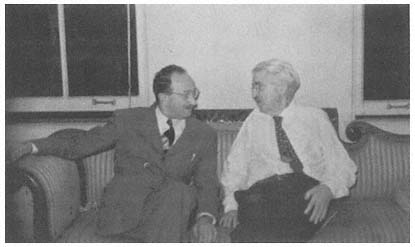
Sidney Hook and John Dewey in a photo taken by Hook's son in 1949. Hook
wrote his doctoral dissertation under Dewey at Columbia University in the late
1920s, and in the 1930s and 1940s the two men joined to oppose totalitarianism
and absolutism. Courtesy of Ernest B. Hook.
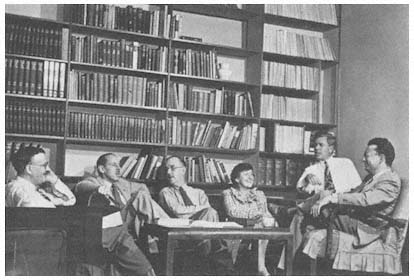
Freda Kirchwey and some of the editorial staff of the Nation in the mid-1940s.
A constant antagonist of the New York intellectuals, who thought her too sympathetic
to the Soviet Union, Kirchwey argued with Sidney Hook and Dwight
Macdonald about their criticism of the Waldorf Conference. From the left: associate
editor Keith Hutchison, managing editor J. King Gordon, drama critic Joseph
Wood Krutch, editor and publisher Freda Kirchwey, associate editor Maxwell
Stewart, and Washington editor I. F. Stone. Courtesy of the Schlesinger
Library, Radcliffe College.
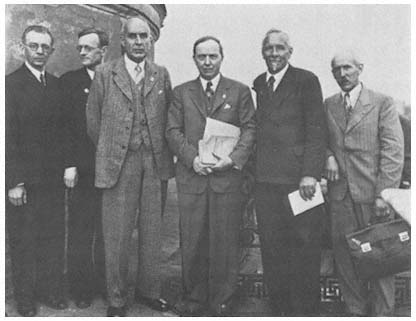
Harlow Shapley (third from right) in June 1945 as Harvard's representative at
the 220th anniversary of the Academy of Sciences in Moscow. An adversary of
the New York intellectuals during the Waldorf Conference, which he chaired,
Shapley was a professor of astronomy at Harvard, director of the Harvard Observatory
from 1921 to 1952, and president of the American Academy of Arts
and Sciences from 1939 to 1944. Shapley was active in organizations on the
political left, and many observers saw him as a man of peace who suggested cooperation
in science and culture with the Soviet Union. The New York intellectuals,
however, viewed Shapley as an irresponsible fellow traveler who unwittingly
aided Stalinist totalitarianism. Courtesy of the Harvard University
Archives.

At a gathering in 1947 are, from left to right, Bowden Broadwater (Mary McCarthy's
husband at the time), Lionel Abel (standing), Elizabeth Hardwick (later
associated with the New York Review of Books), Miriam Chiaromonte, Nicola
Chiaromonte (an editor of the Italian Tempo Presente), Mary McCarthy, and
John Berryman; sitting in front are Dwight Macdonald and Kevin McCarthy
(Mary's brother). Courtesy of Vassar College Library.
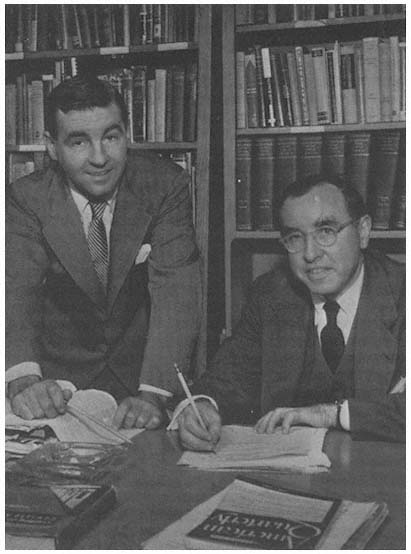
At his office at the University of Chicago, sociologist David Riesman (right) with
Reuel Denney in about 1950. An affiliate of the New York group, Riesman
learned of Nathan Glazer's work by reading Commentary and then collaborated
with Glazer and Denney on The Lonely Crowd, and with Glazer on Faces in the
Crowd. Courtesy of David Riesman.
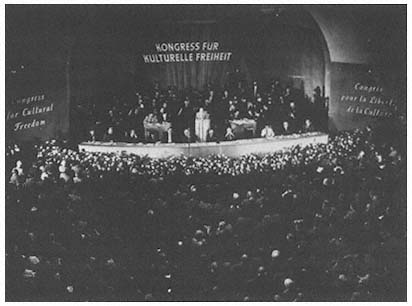
Sidney Hook (at microphone) addressing the opening meeting of the Congress
for Cultural Freedom in Berlin in 1950, standing before the Berlin Philharmonic
Orchestra. At the speakers' table are some of the European associates of the New
York intellectuals: Ignazio Silone (fifth from the left), Arthur Koestler (third
from the right, in a white shirt), and Melvin Lasky (far right). Courtesy of Ernest
B. Hook.
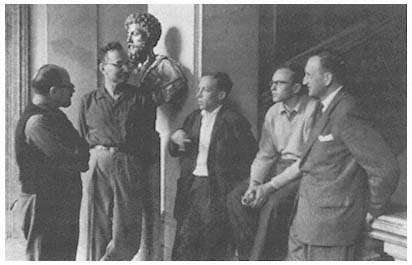
In Austria in 1953, teaching at the Salzburg Seminar in American Studies, are
Daniel Bell (far left) and Seymour Martin Lipset (next left) with students. Courtesy
of Daniel Bell.
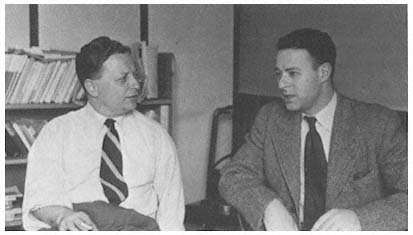
While in England on a graduate fellowship at Cambridge University in the early
1950s, Norman Podhoretz (right) visited Irving Kristol at the Encounter office.
Courtesy of Daniel Bell.
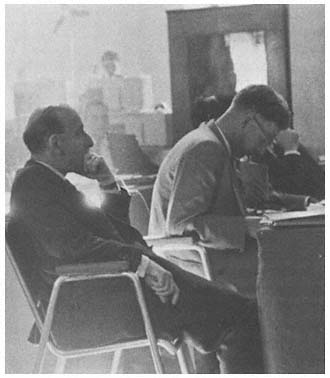
French intellectual Raymond Aron (left), whose The Opium of
the Intellectuals was an influential treatise against communist
ideology. Courtesy of Daniel Bell.
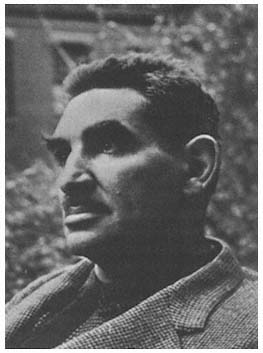
Harold Rosenberg, critic of art and culture for the
New York group's publications, and later for the
New Yorker. Courtesy of the University of Chicago
Press.
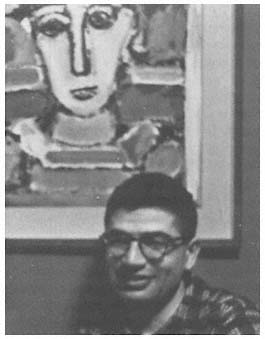
Murray Hausknecht in a photo taken by a friend in
1955. Hausknecht, a sociologist who became a contributing
editor of Dissent in 1957, thought that the literature
of ex-Communist repentance encouraged intellectual
conformity and discouraged political radicalism.
Courtesy of Murray Hausknecht.
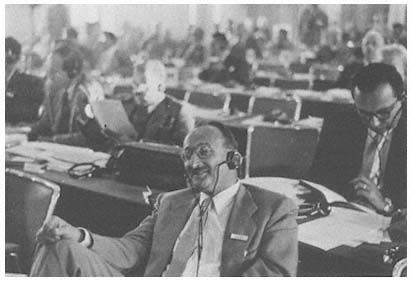
Sidney Hook, with Seymour Martin Lipset behind him, at the Future of Freedom
conference held by the Congress for Cultural Freedom in Milan in September
1955. It was at this conference that the phrase "end of ideology" began to
gain prominence. Courtesy of Daniel Bell.
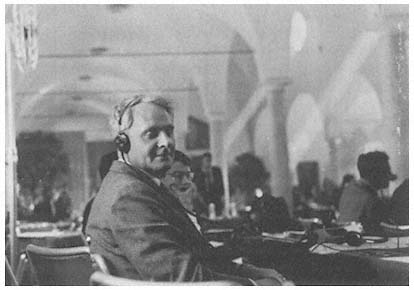
English poet Stephen Spender at the Milan conference. A contributor to The
God That Failed, Spender was from 1953 to 1965 an editor of Encounter, a magazine
published in London by the Congress for Cultural Freedom. Courtesy of
Daniel Bell.
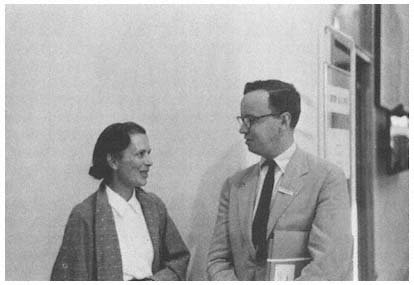
Kitty Galbraith and Arthur Schlesinger, Jr., at the Milan conference. Courtesy
of Daniel Bell.
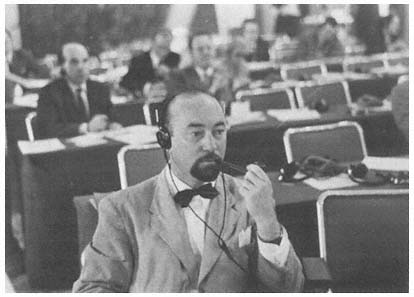
Melvin Lasky at the Milan conference. Lasky was an editor for the New Leader
in the early 1940s, one of the founders of the Congress for Cultural Freedom,
and an editor of Encounter from 1958 until the mid-1960s. Courtesy of Daniel
Bell.
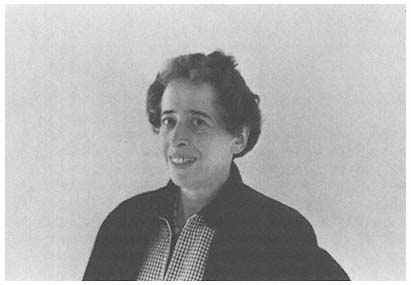
Hannah Arendt, leading theorist on the origins of totalitarianism, at the Milan
conference. Courtesy of Daniel Bell.
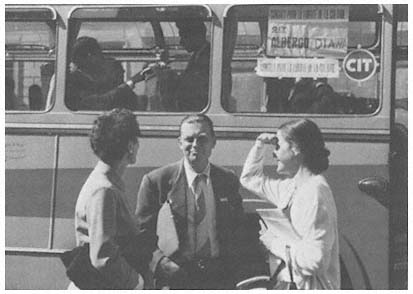
In front of a Congress for Cultural Freedom bus at the Milan conference are
Miriam Chiaromonte, Czeslaw Milosz, and Mary McCarthy. Courtesy of Daniel
Bell.
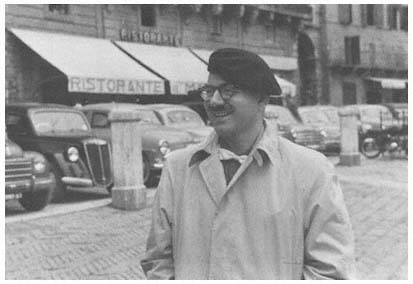
Daniel Bell in Milan in 1955. Courtesy of Daniel Bell.
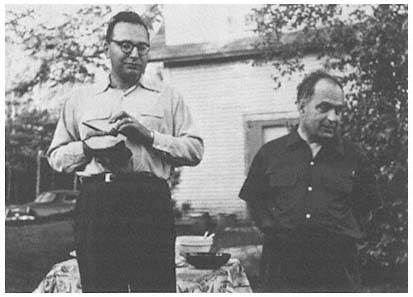
Seymour Martin Lipset and Will Herberg at Daniel Bell's summer house in New
Hampshire in 1954. Courtesy of Daniel Bell.
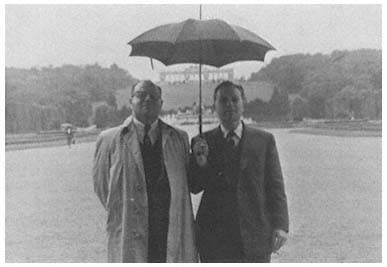
Daniel Bell and Irving Kristol share an umbrella in Rome in the mid-1950s. In
1965 the two founded The Public Interest, which they co-edited. In 1969 a special
issue of the magazine, devoted to an evaluation of student radicalism, was
published as Confrontation. Courtesy of Daniel Bell.
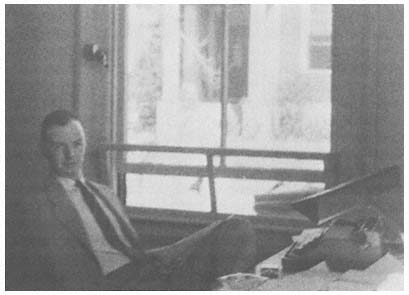
Dennis Wrong, sociologist and contributor to Dissent and Commentary, at work
in his office at Brown University in May 1957. Courtesy of Dennis Wrong.
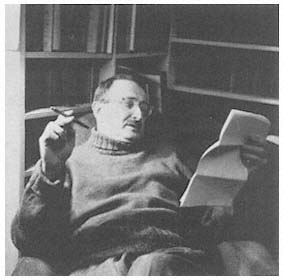
Sidney Hook reading galleys at home in Brooklyn in
1958 or 1959. Courtesy of Ernest B. Hook.
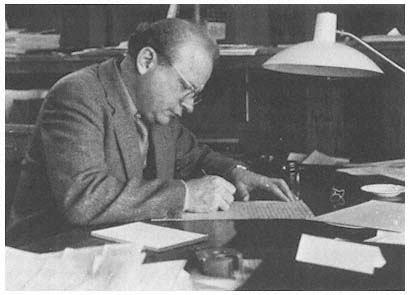
Edward Shils at work at the Center for Advanced Study in the Behavioral Sciences
at Stanford University, in 1958–59. Courtesy of Daniel Bell.
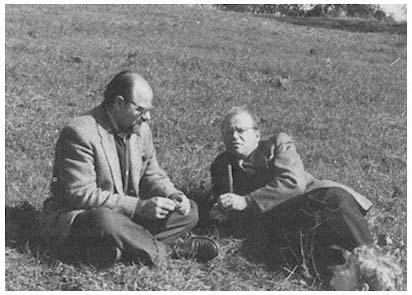
Daniel Bell and Edward Shils at the Center for Advanced Study in the Behavioral
Sciences at Stanford University, in 1958–59. Courtesy of Daniel Bell.
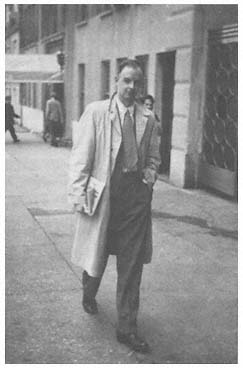
Dennis Wrong in the early
1960s on Central Park West
in New York. Courtesy of
Dennis Wrong.
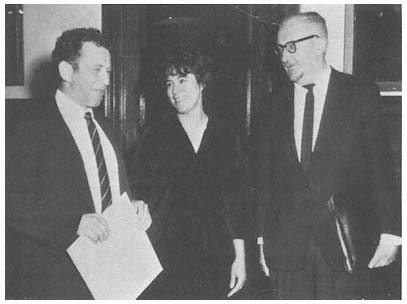
Dwight Macdonald (right) with Norman and Adele Mailer. Mailer addressed the
Waldorf Conference, was on the editorial board of Dissent and contributed occasional
articles, and marched with Macdonald and Robert Lowell on the Pentagon
on October 21, 1967, a demonstration that became the subject of his Armies of
the Night. One of the founders of the Village Voice, Mailer remained more
sympathetic to the Beats and counterculture than did most other New York intellectuals.
Courtesy of Gloria Macdonald.
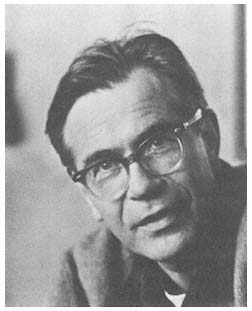
Historian Richard Hofstadter was working in
his Columbia University office in Hamilton Hall
on April 23, 1968, when protesters filled the building
and later occupied it. Hofstadter opposed the actions
of the New Left on campuses in the 1960s. Dwight W.
Webb, courtesy of Alfred A. Knopf, Inc.
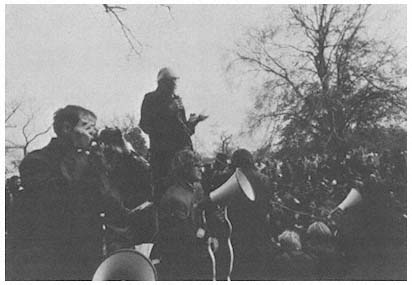
Dwight Macdonald addressing a crowd of protesters in early 1970, probably at
Hofstra University, where he was teaching for the year. Although Macdonald
disapproved of some of the students' tactics, he was one of the New York intellectuals
who supported the young radicals. Courtesy of Gloria Macdonald.
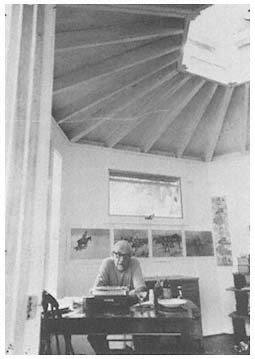
Dwight Macdonald in his studio in East
Hampton, Long Island. Courtesy of Gloria
Macdonald.
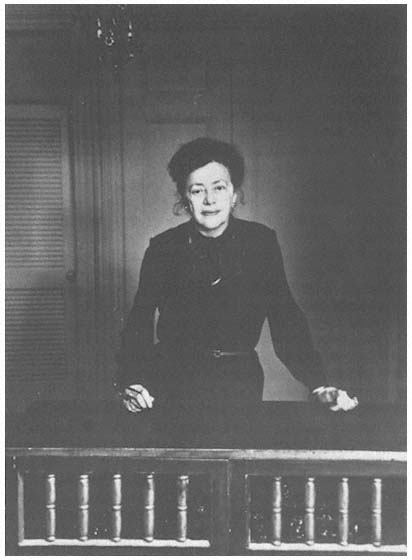
Literary and cultural critic Diana Trilling reviewed books for the Nation in the
1940s, was active in the American Committee for Cultural Freedom in the
1950s, and frequently contributed articles to Commentary and Partisan Review.
Courtesy of Tom Victor and Harcourt, Brace, Jovanovich, Inc.
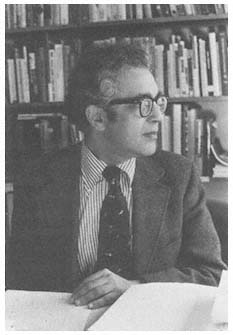
Sociologist Nathan Glazer in 1976 in his office
at Harvard University. Glazer was a member
of the editorial staff of Commentary from its
founding in 1945 until 1954. He was teaching
at the University of California at Berkeley during
the height of the student protests, and in the
1960s he wrote essays critical of the excesses of
student radicalism. Courtesy of the Harvard
University News Office.
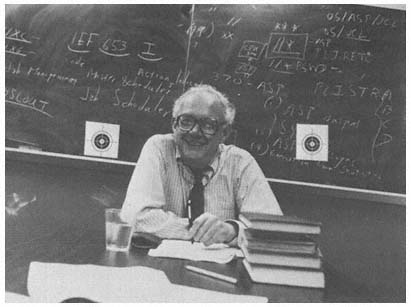
The member of the New York group most active on the intellectual left after
World War II was literary critic Irving Howe. In addition to attending conferences,
teaching at the City University of New York, and contributing to an array
of periodicals, Howe helped found Dissent in 1954 and served as its most prominent
editor. Courtesy of Irving Howe, The American Newness (Harvard University
Press, 1986).
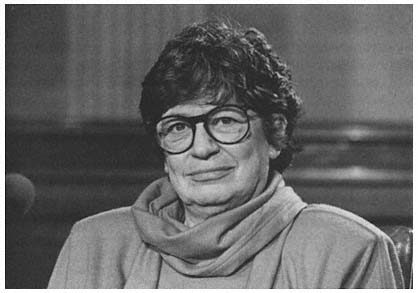
Midge Decter, executive director of the Committee for the Free World, an organization
that in the 1980s took exception to viewpoints it considered excessively
critical of America or insufficiently vigilant about the dangers of totalitarianism.
Courtesy of Midge Decter.
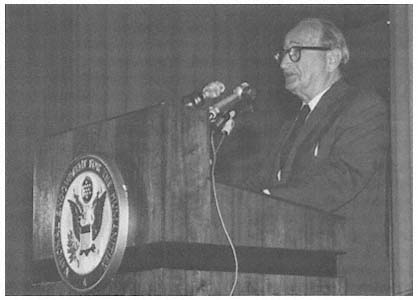
Sidney Hook giving the Jefferson Lectures at the National Endowment for the
Humanities in 1984. Courtesy of Ernest B. Hook.
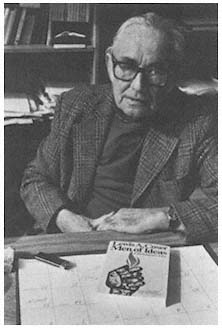
Lewis Coser in his office at the
State University of New York at
Stony Brook in 1986. A sociologist
and one of the founders of Dissent,
Coser was one of the New
York intellectuals who maintained
a radical outlook throughout his
career. Courtesy of Joan Powers.
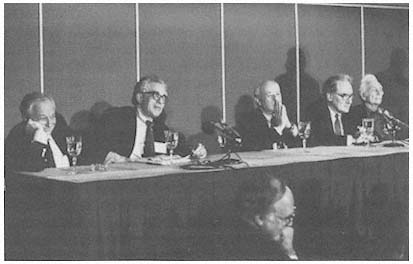
At the Second Thoughts Conference in Washington, D.C., in 1987, disillusioned
former New Leftists expressed repentance, as some of the ex-radicals of the preceding
generation had done in the decade after World War II. Several of the
New York intellectuals attended to encourage or monitor the metamorphosis. At
the dais are, from left to right: Irving Kristol, Nathan Glazer, Norman Podhoretz,
Hilton Kramer, and William Phillips. Courtesy of Rich Lipski and the
Washington Post.